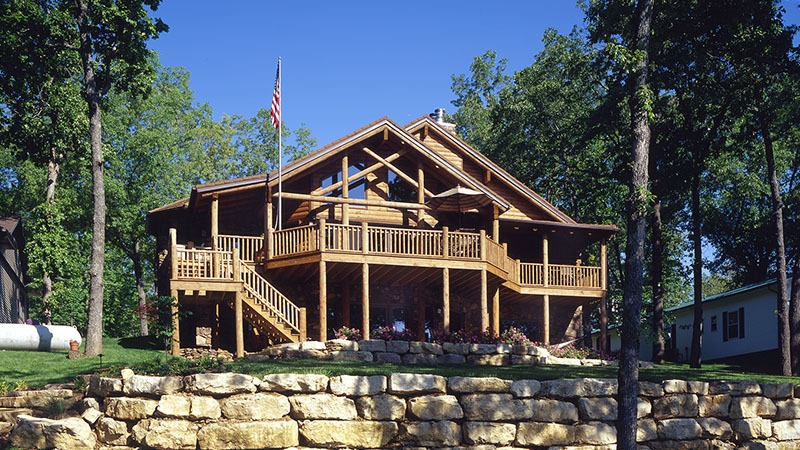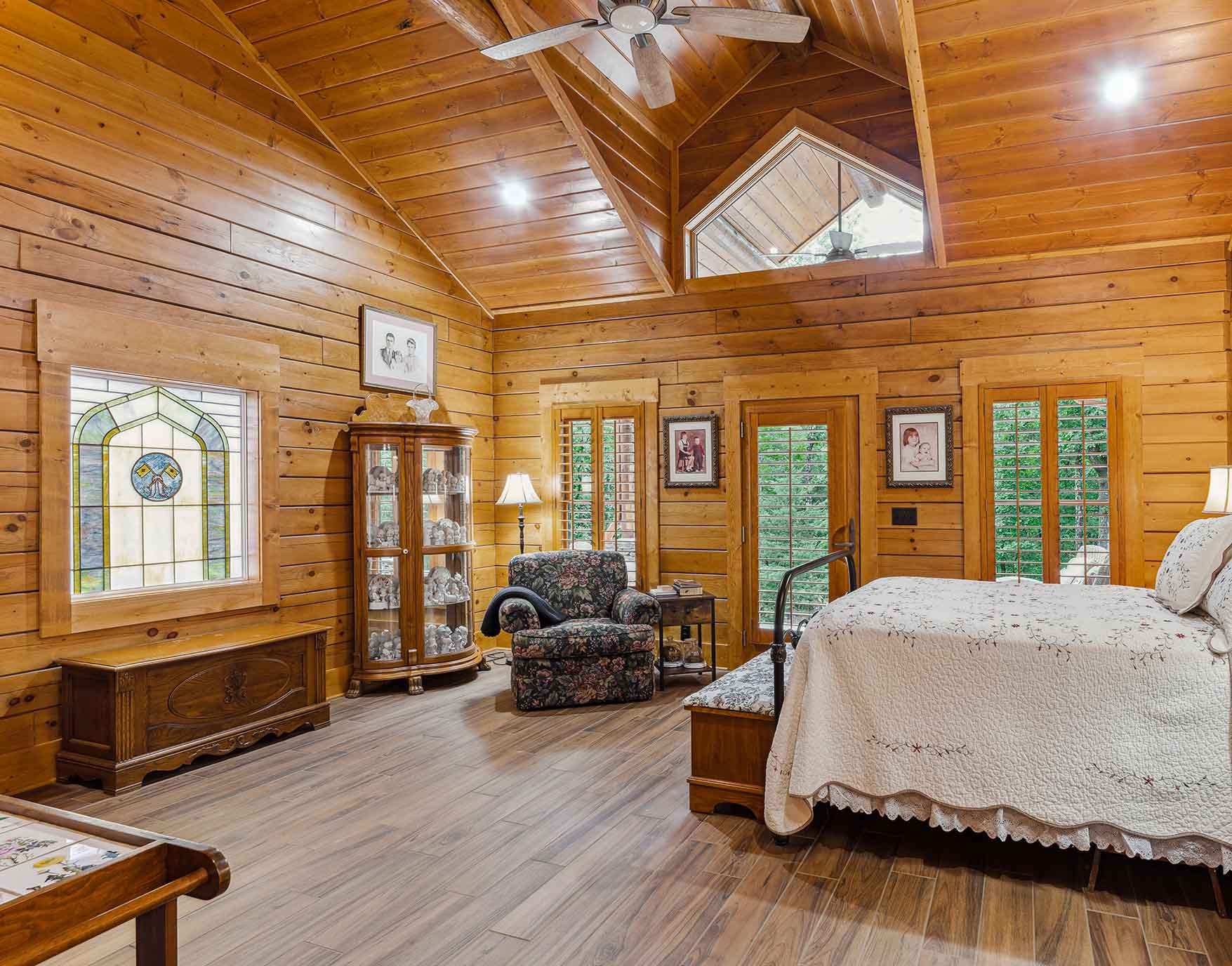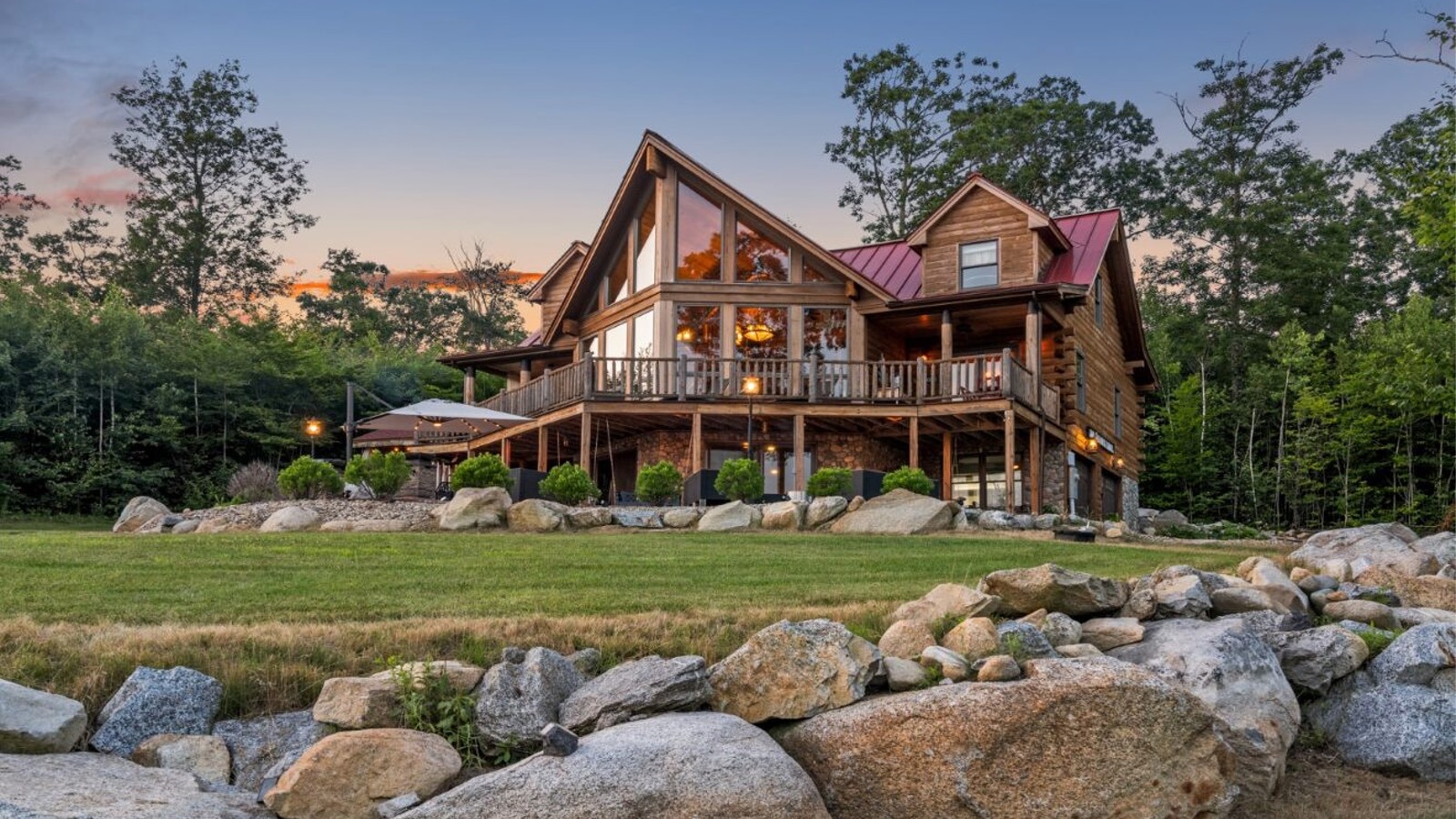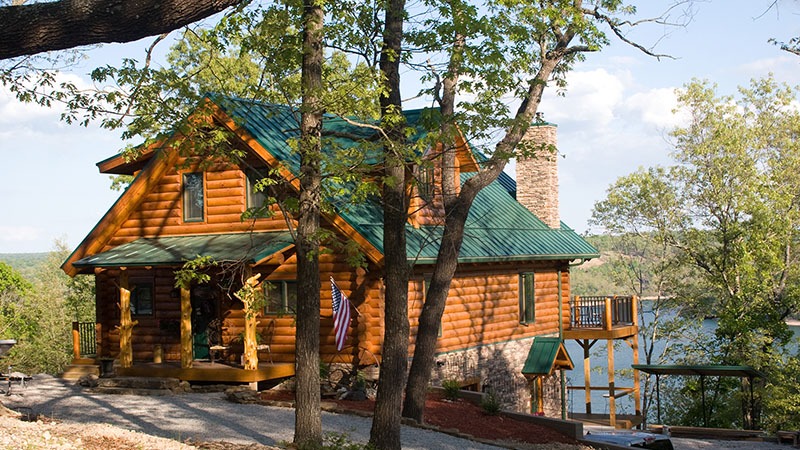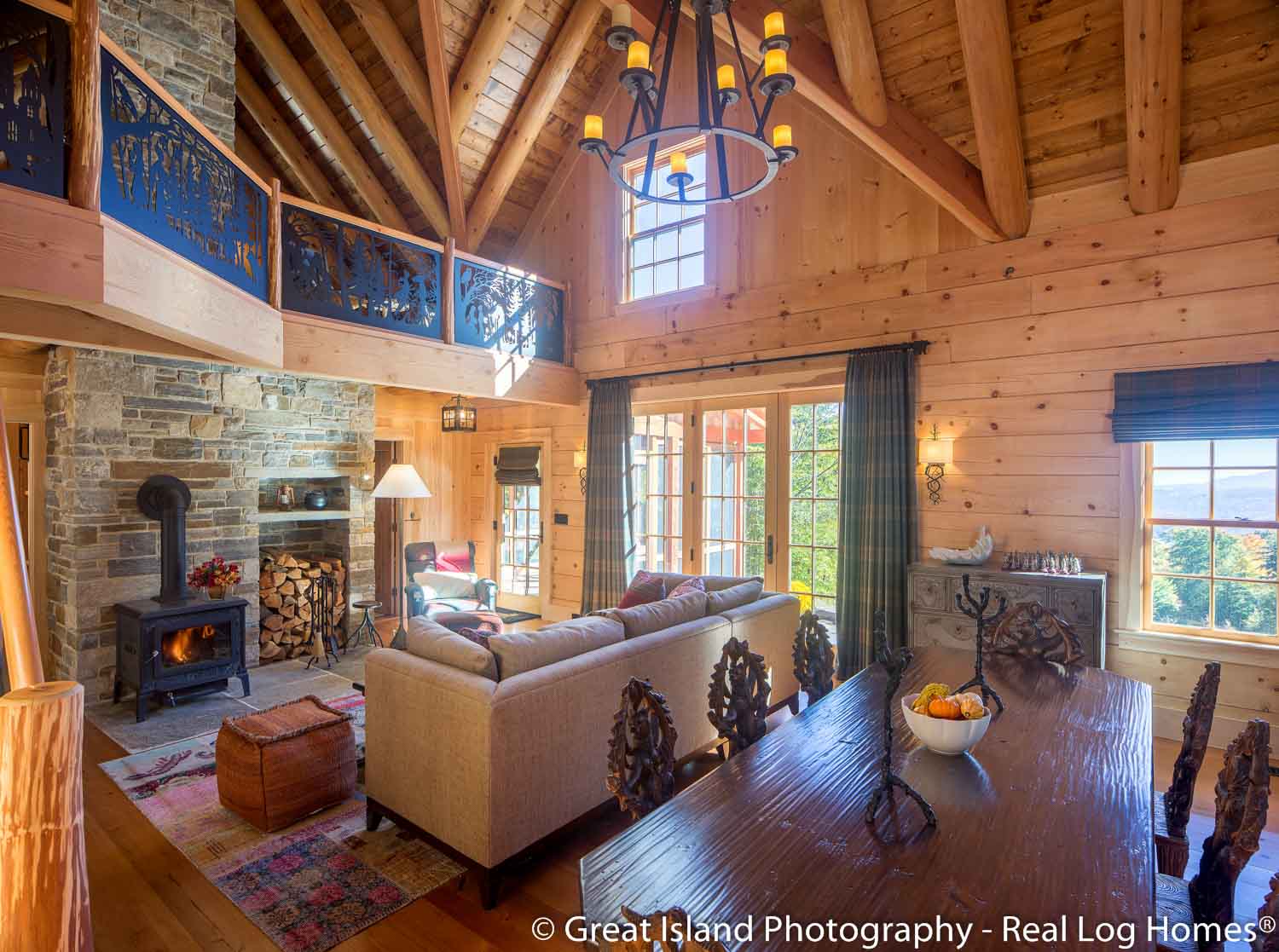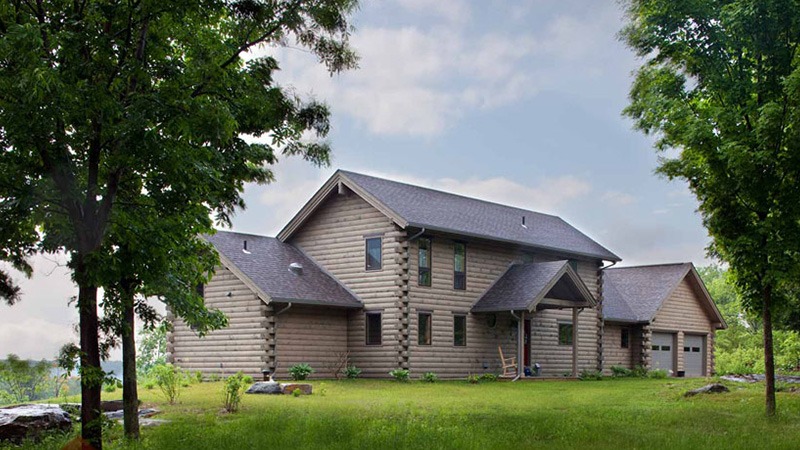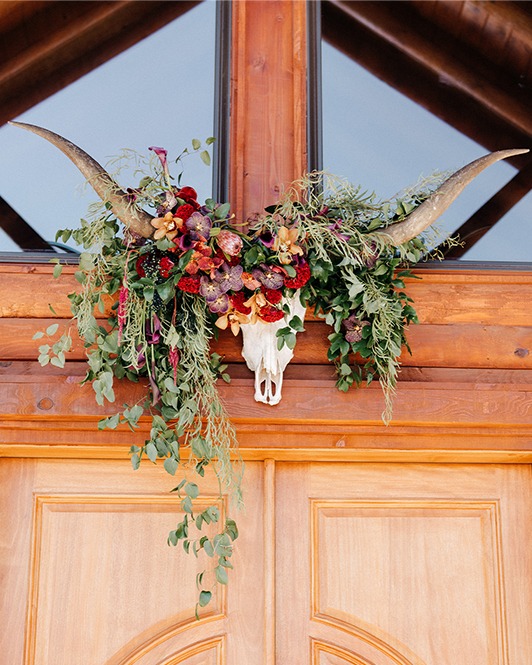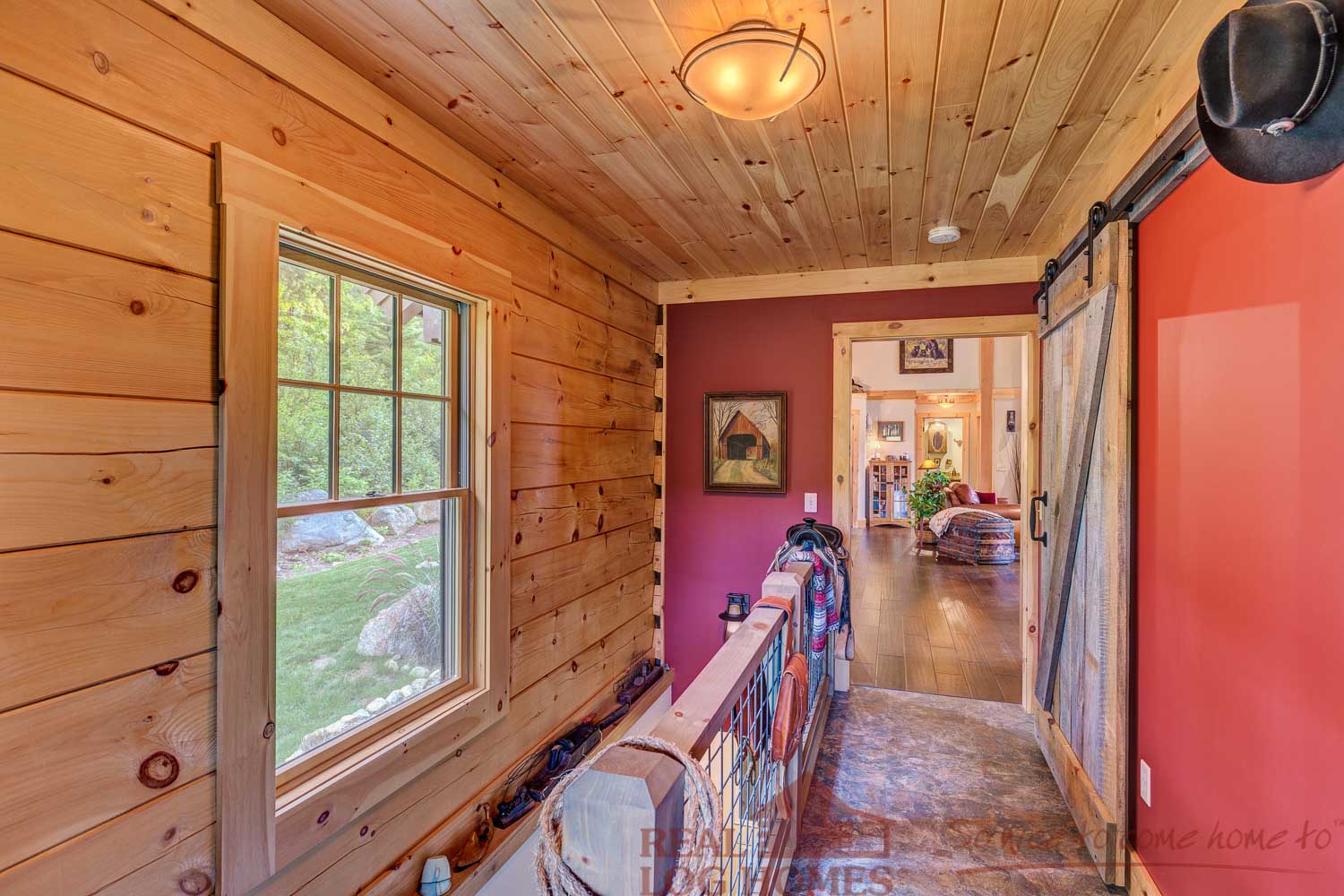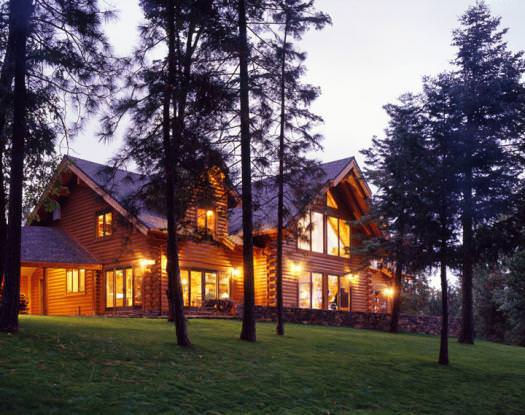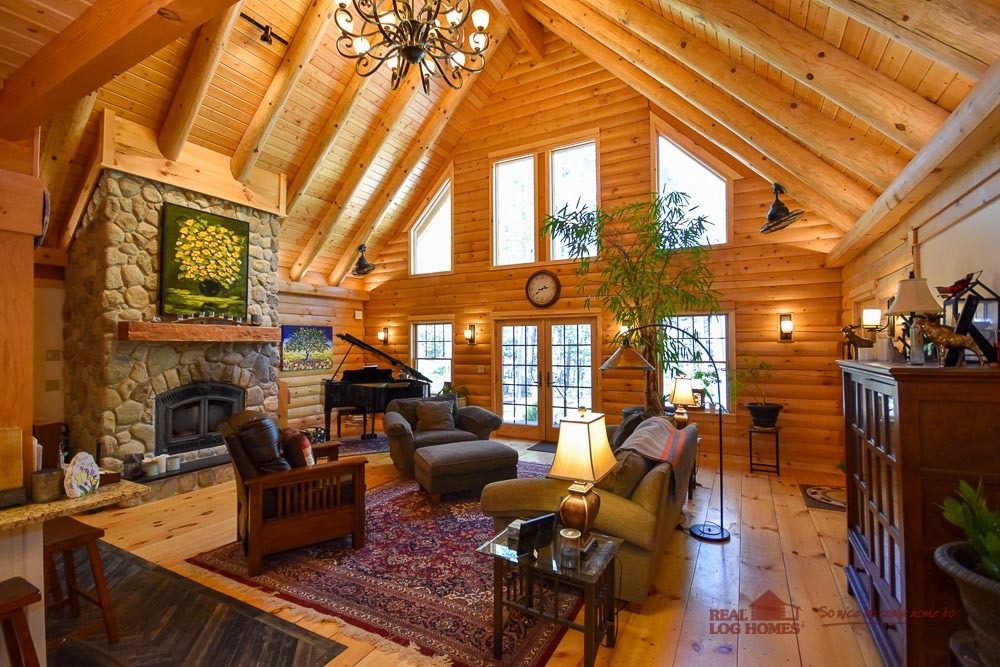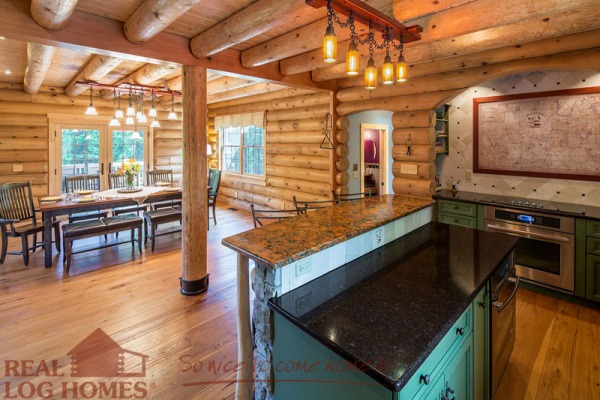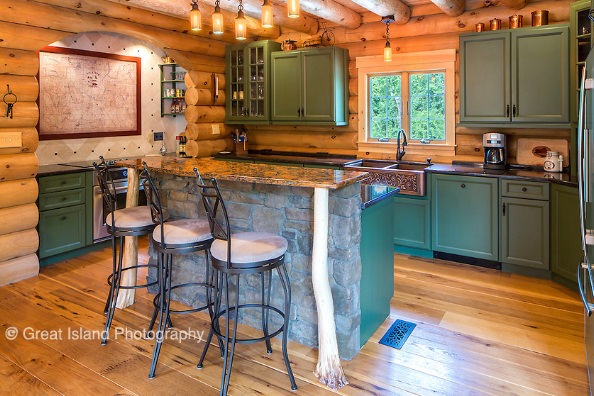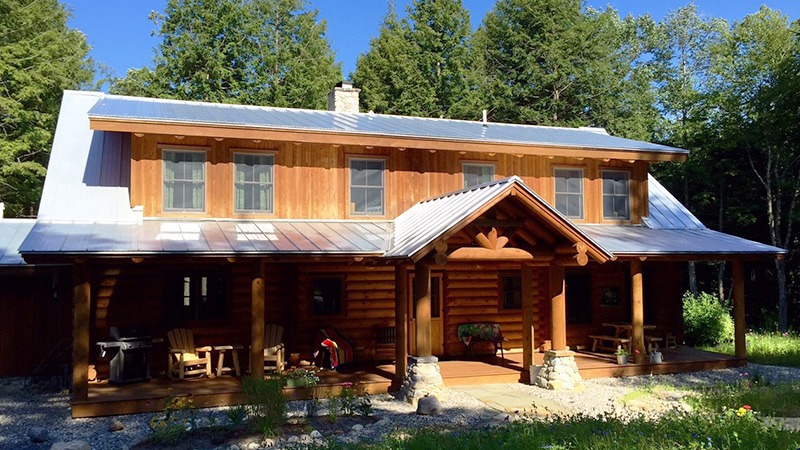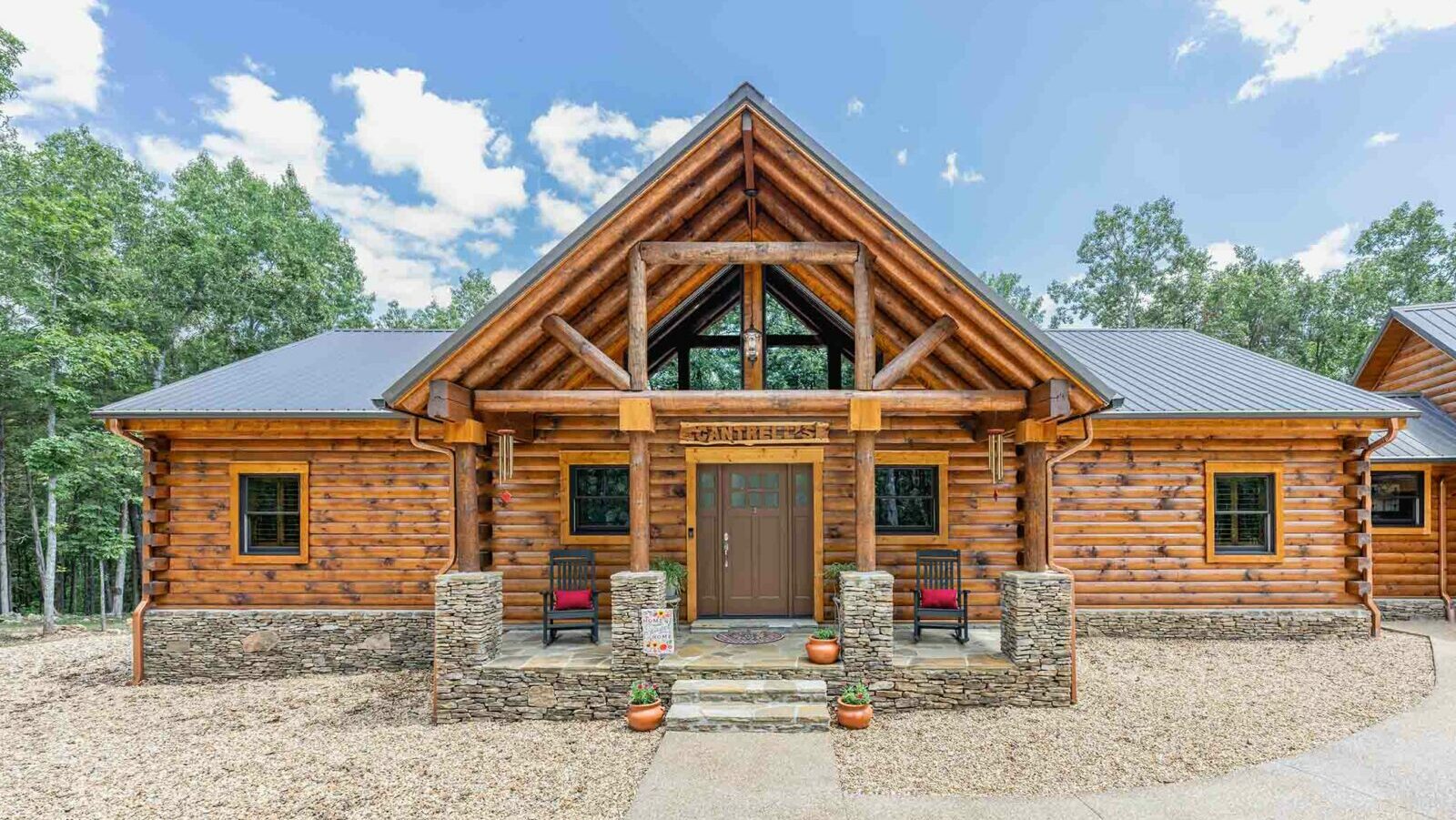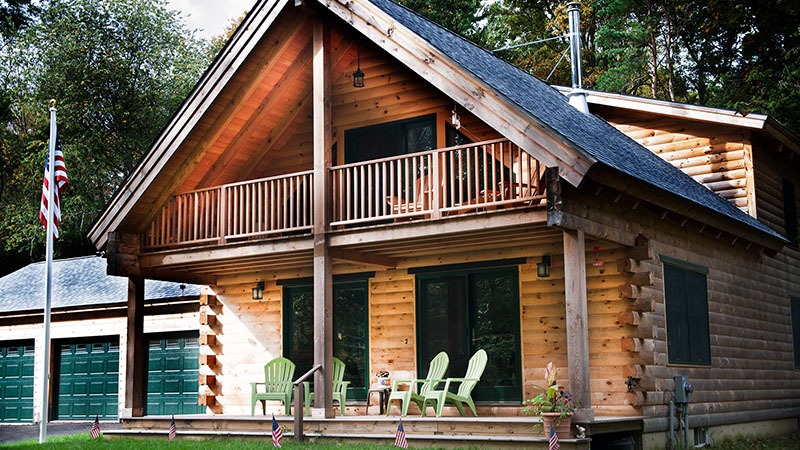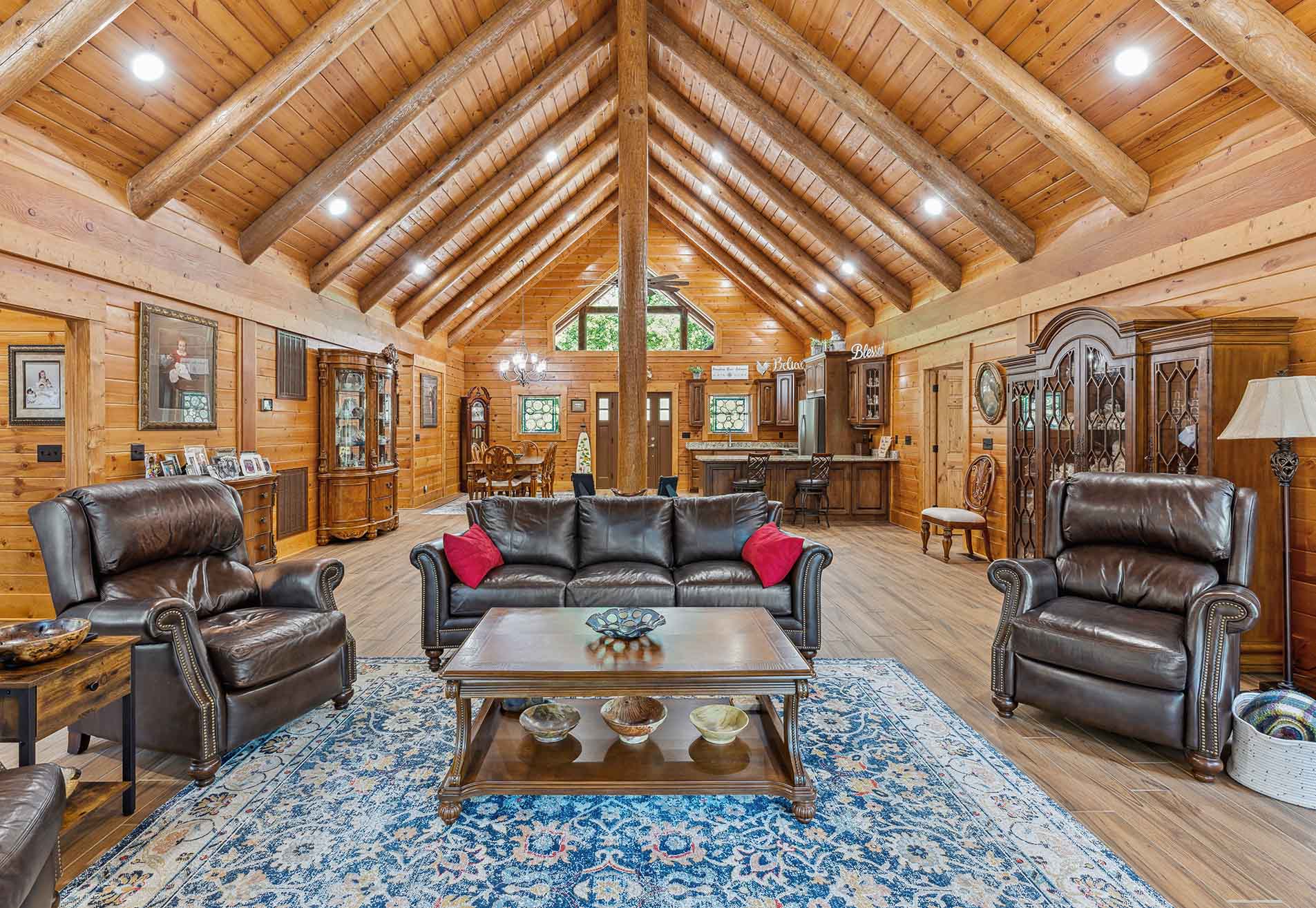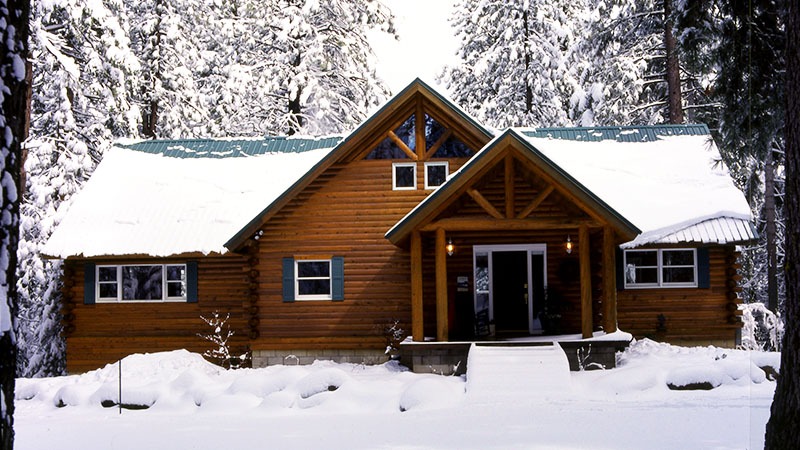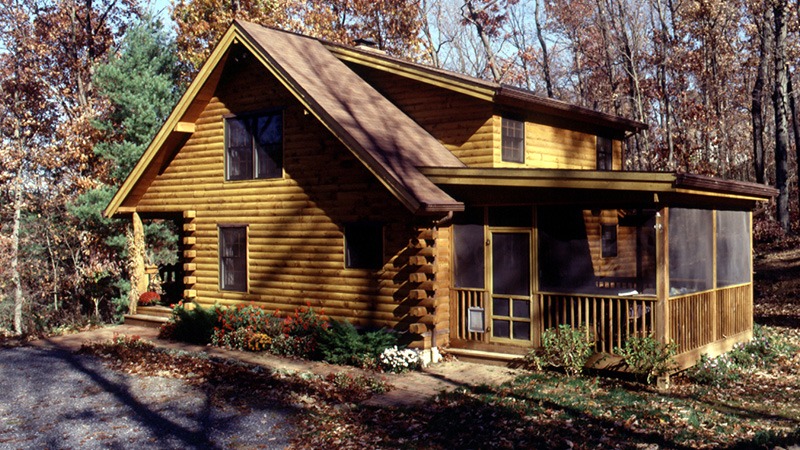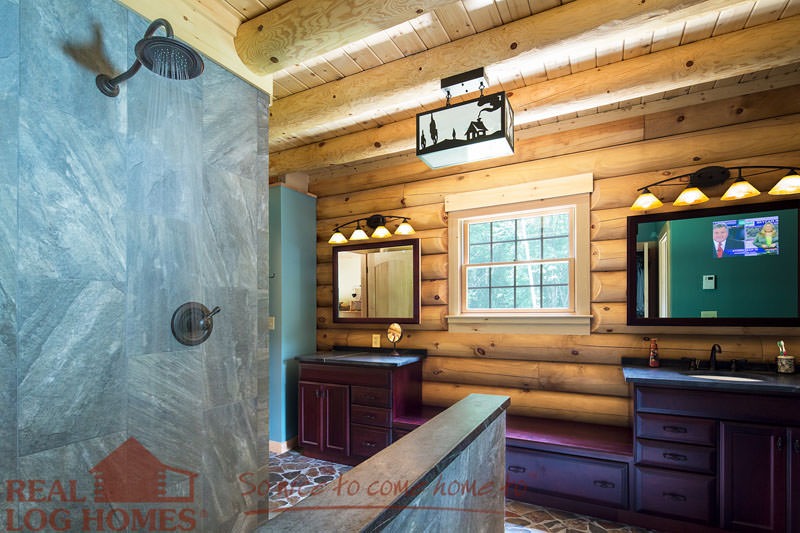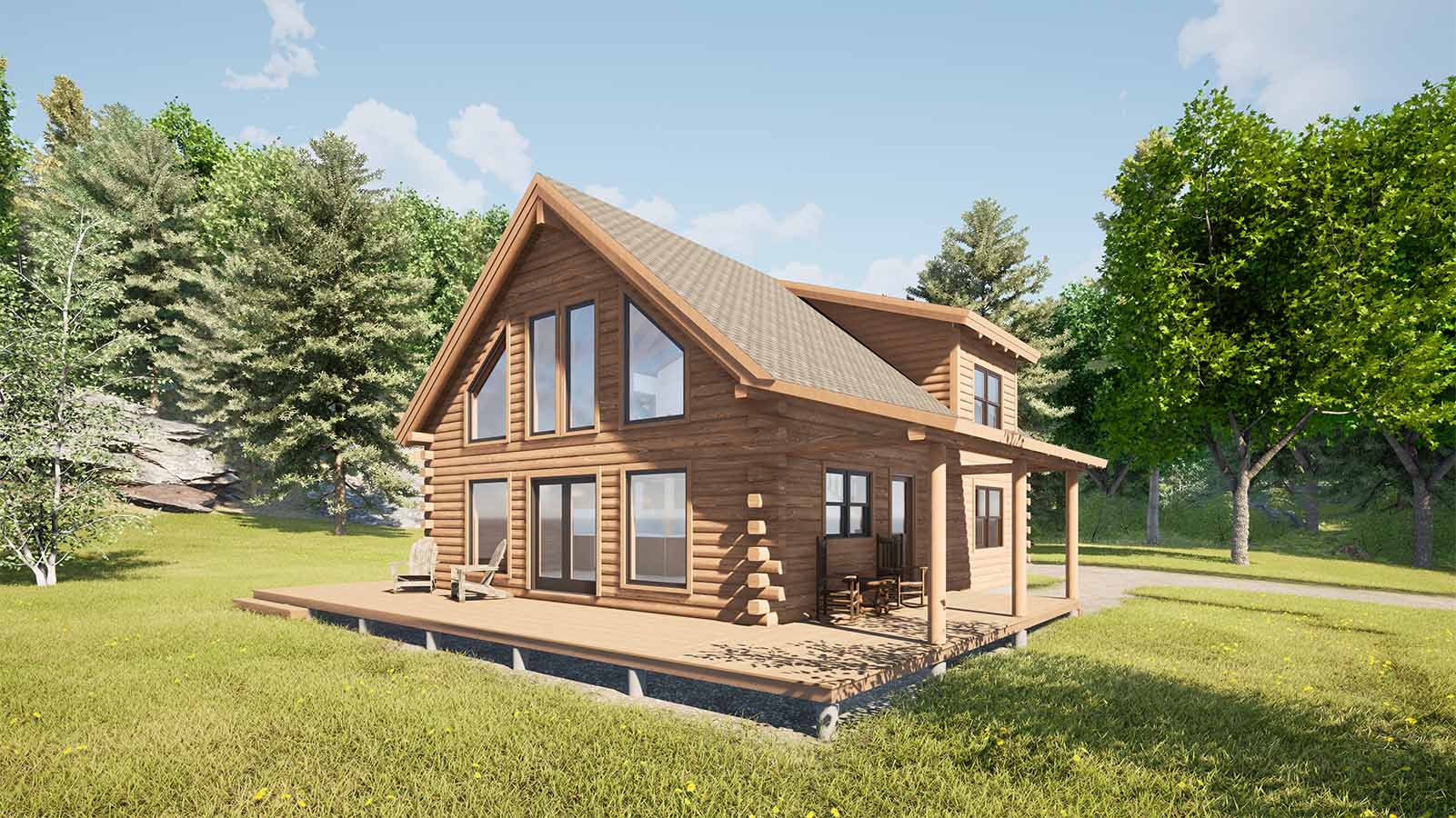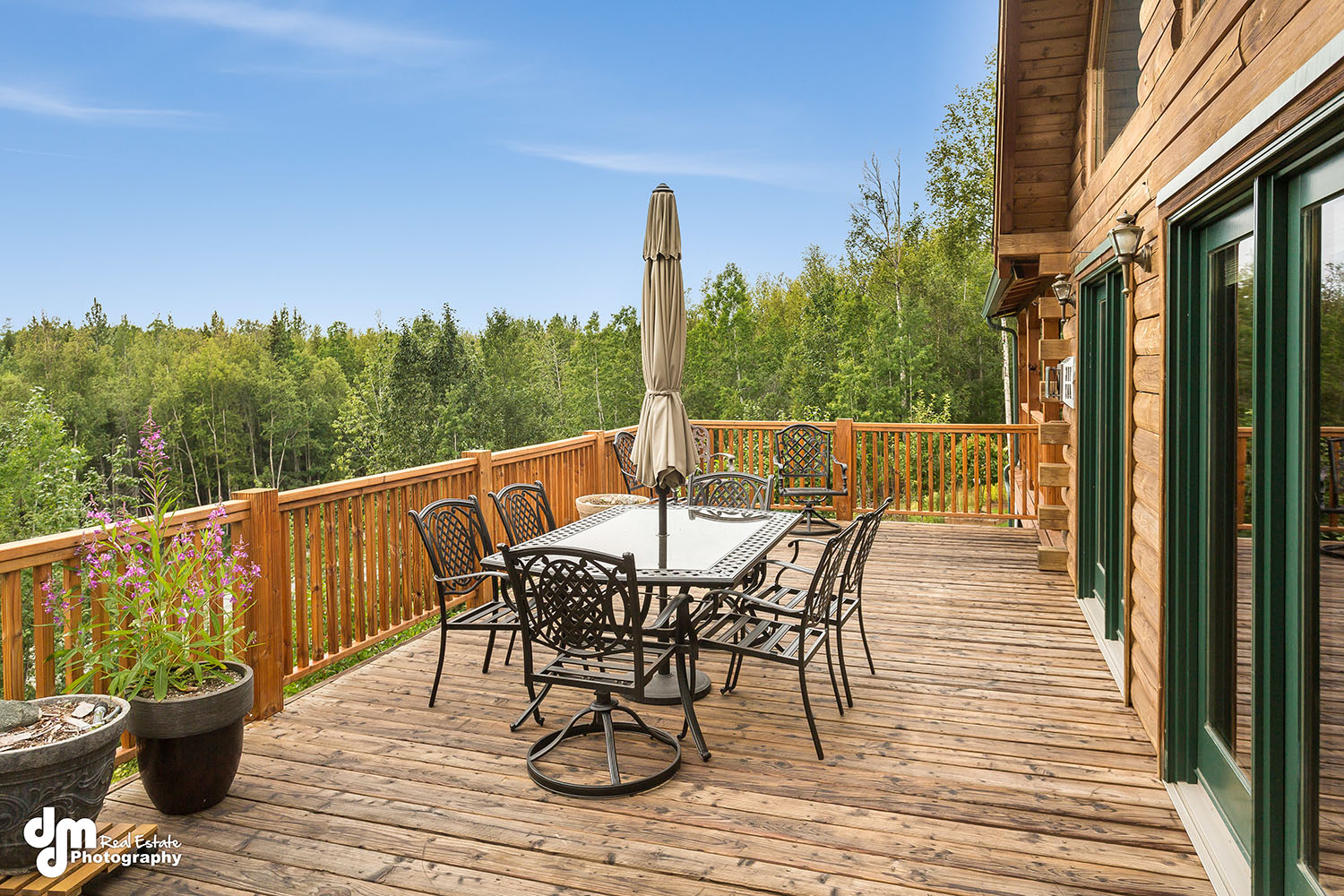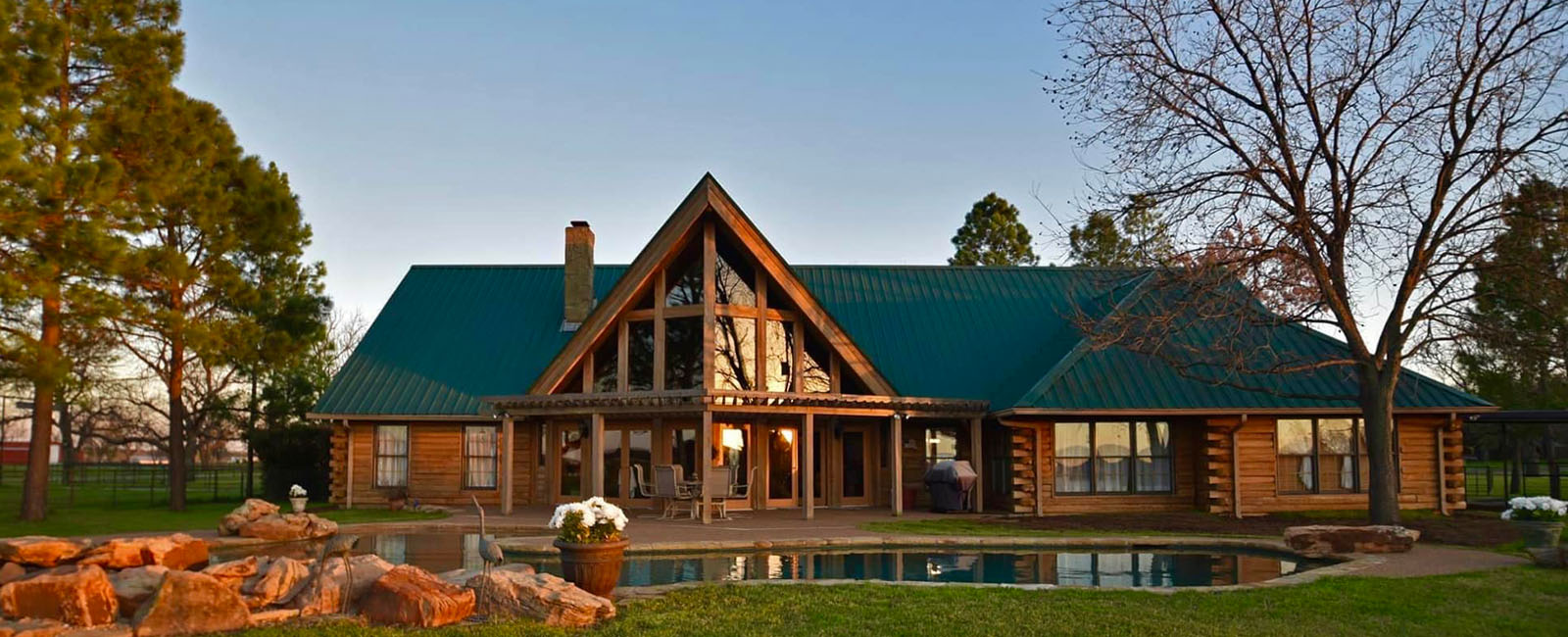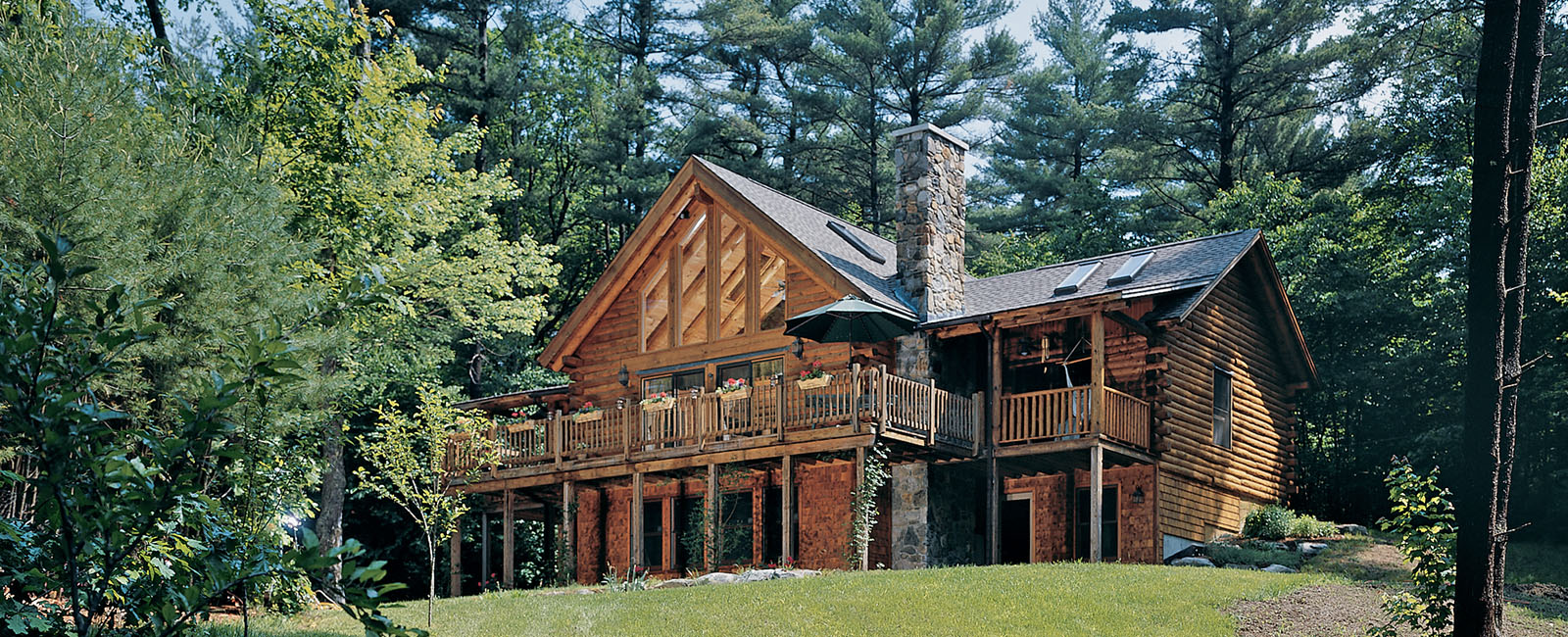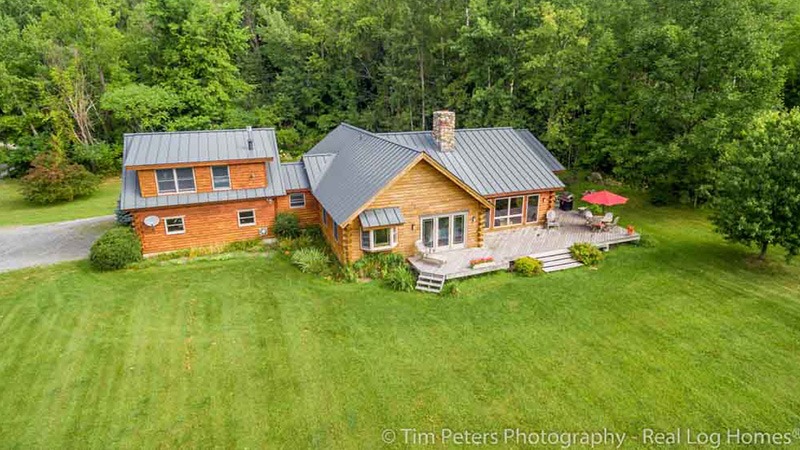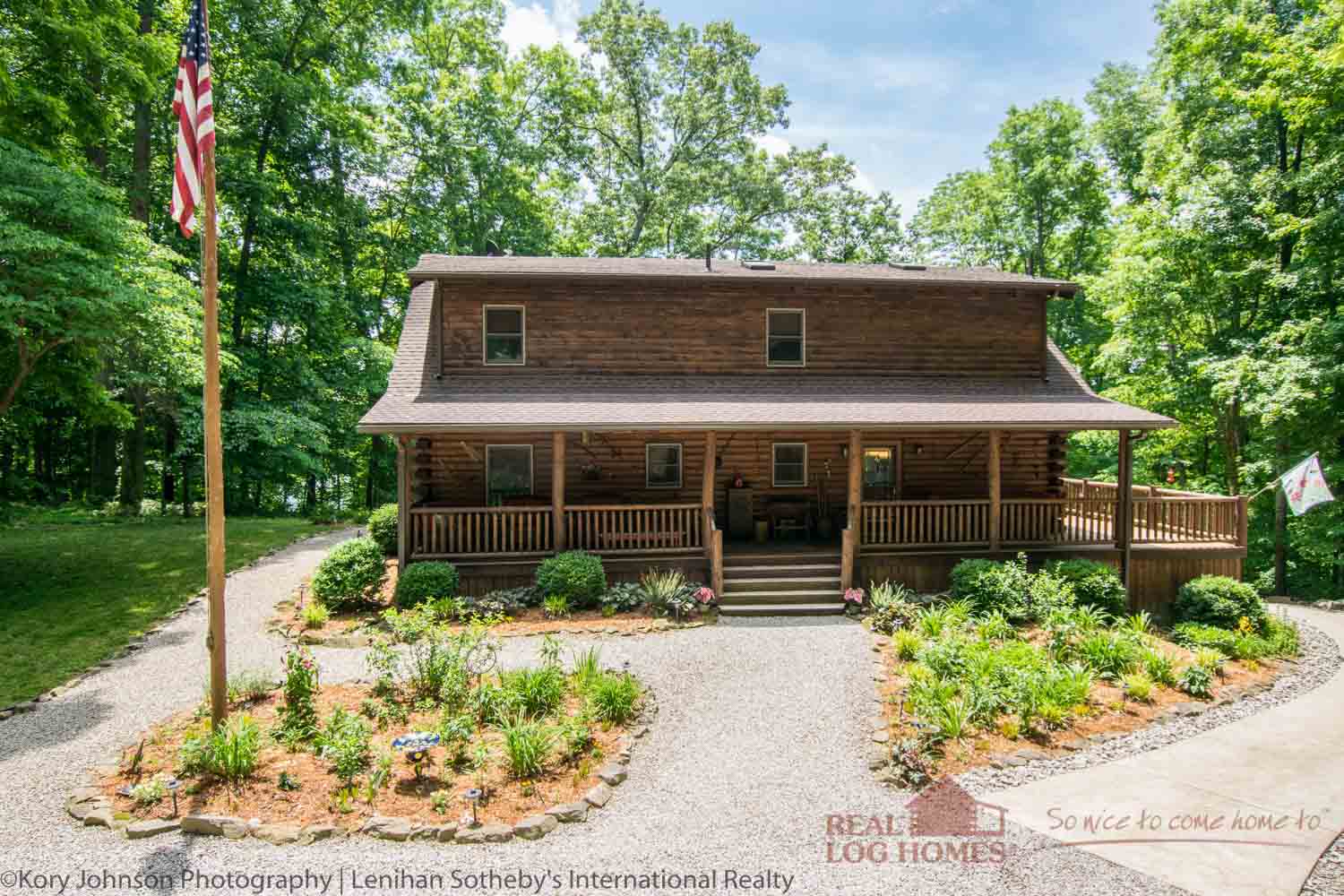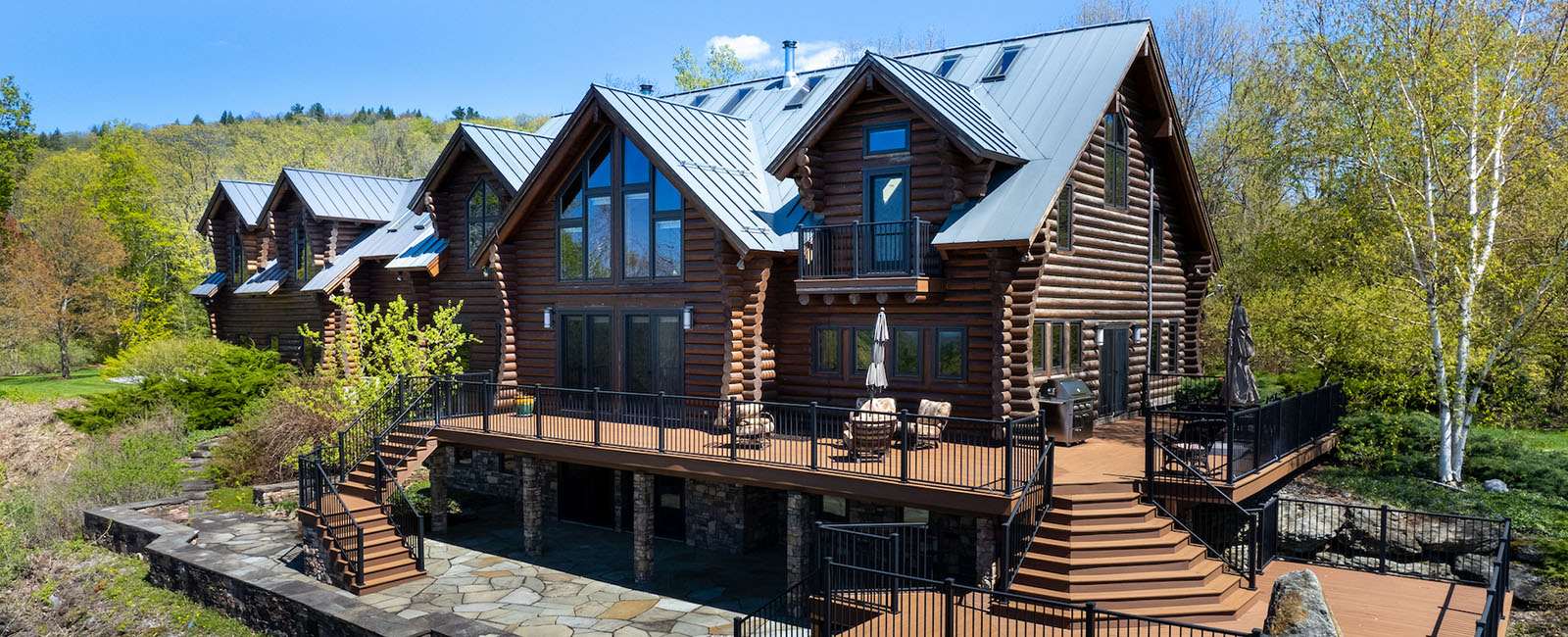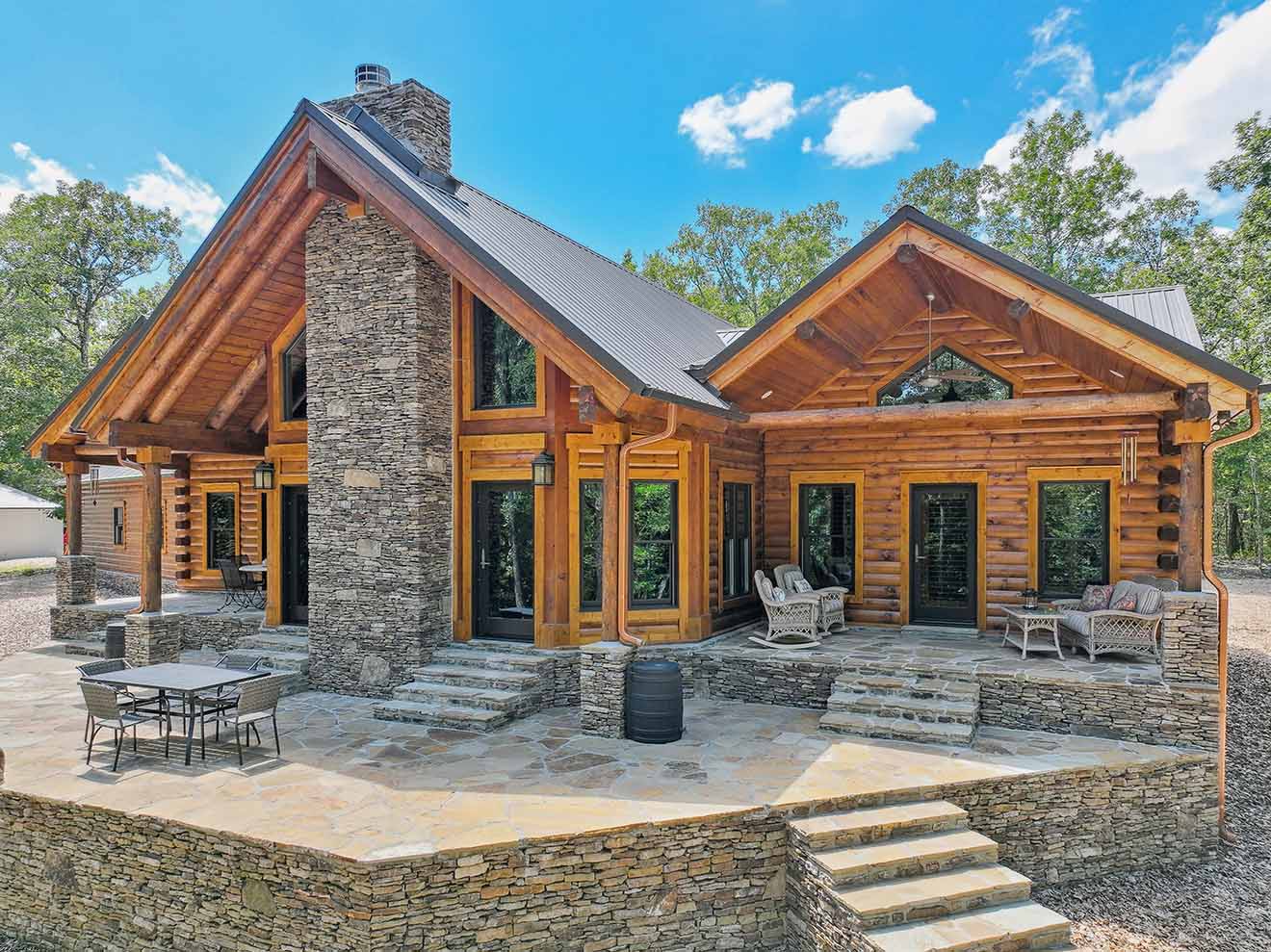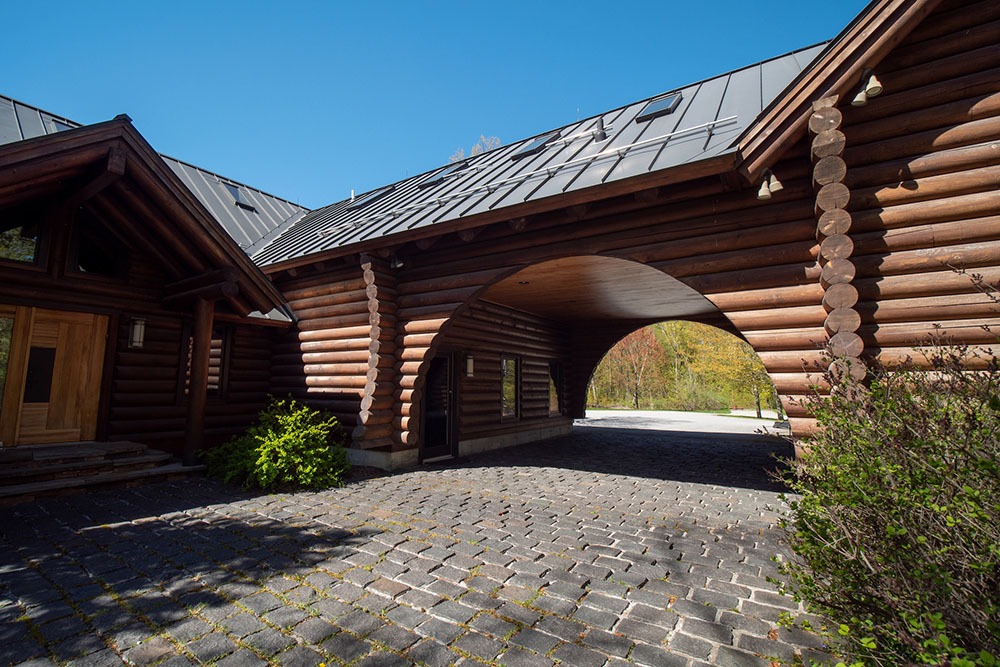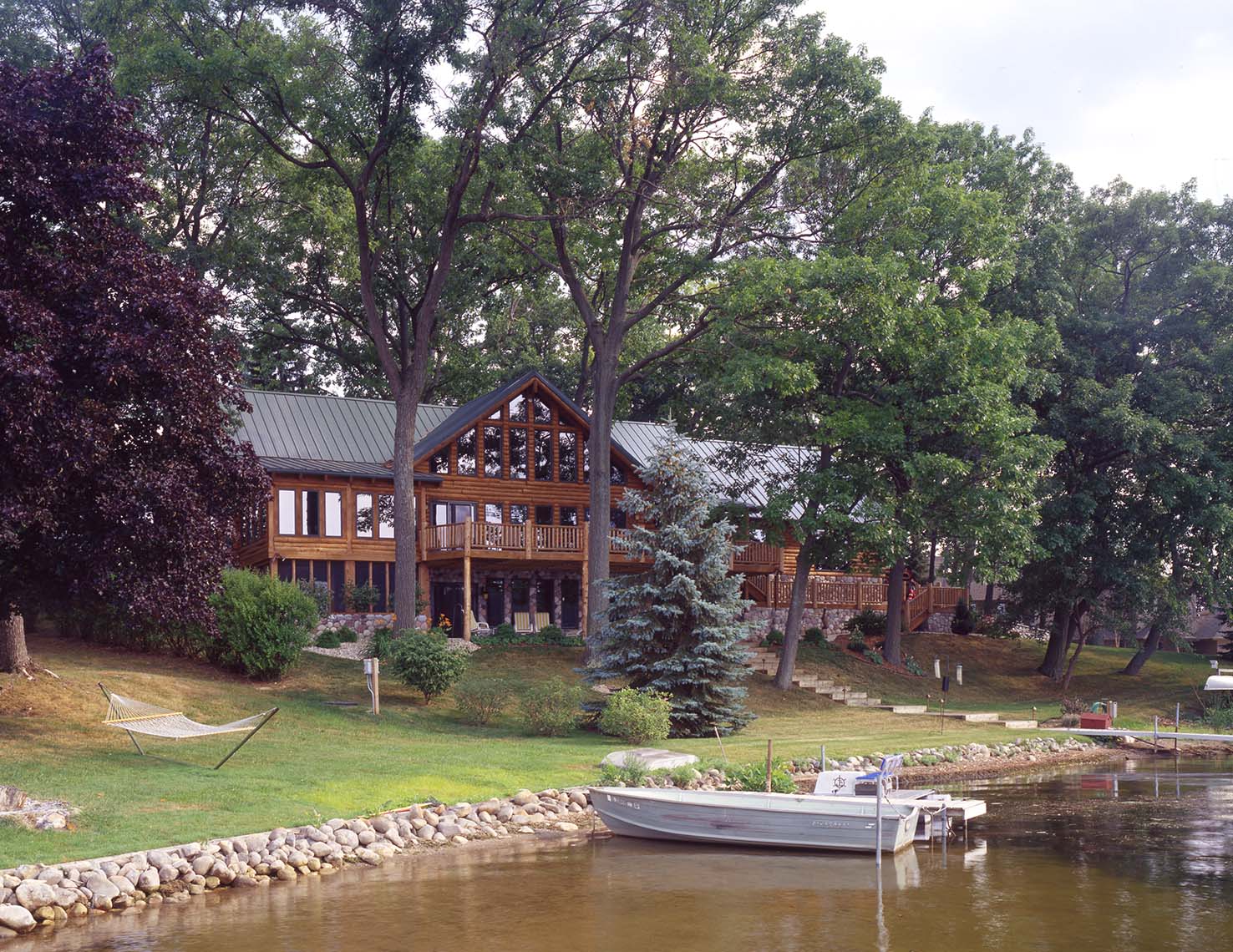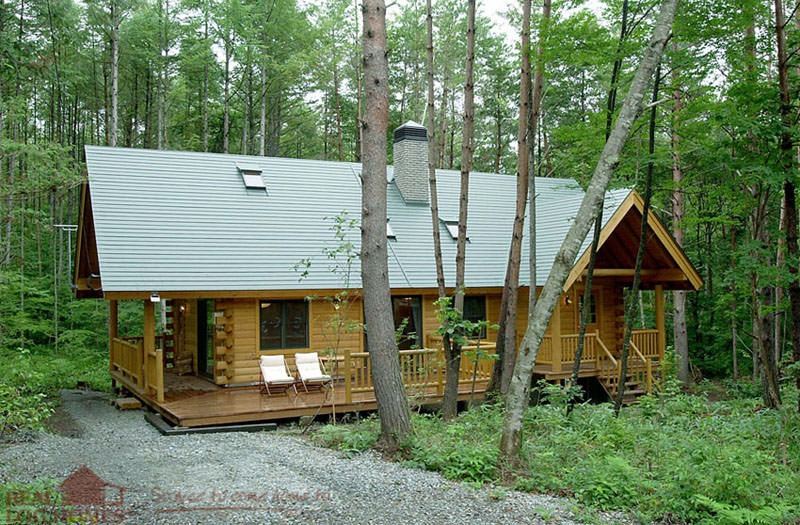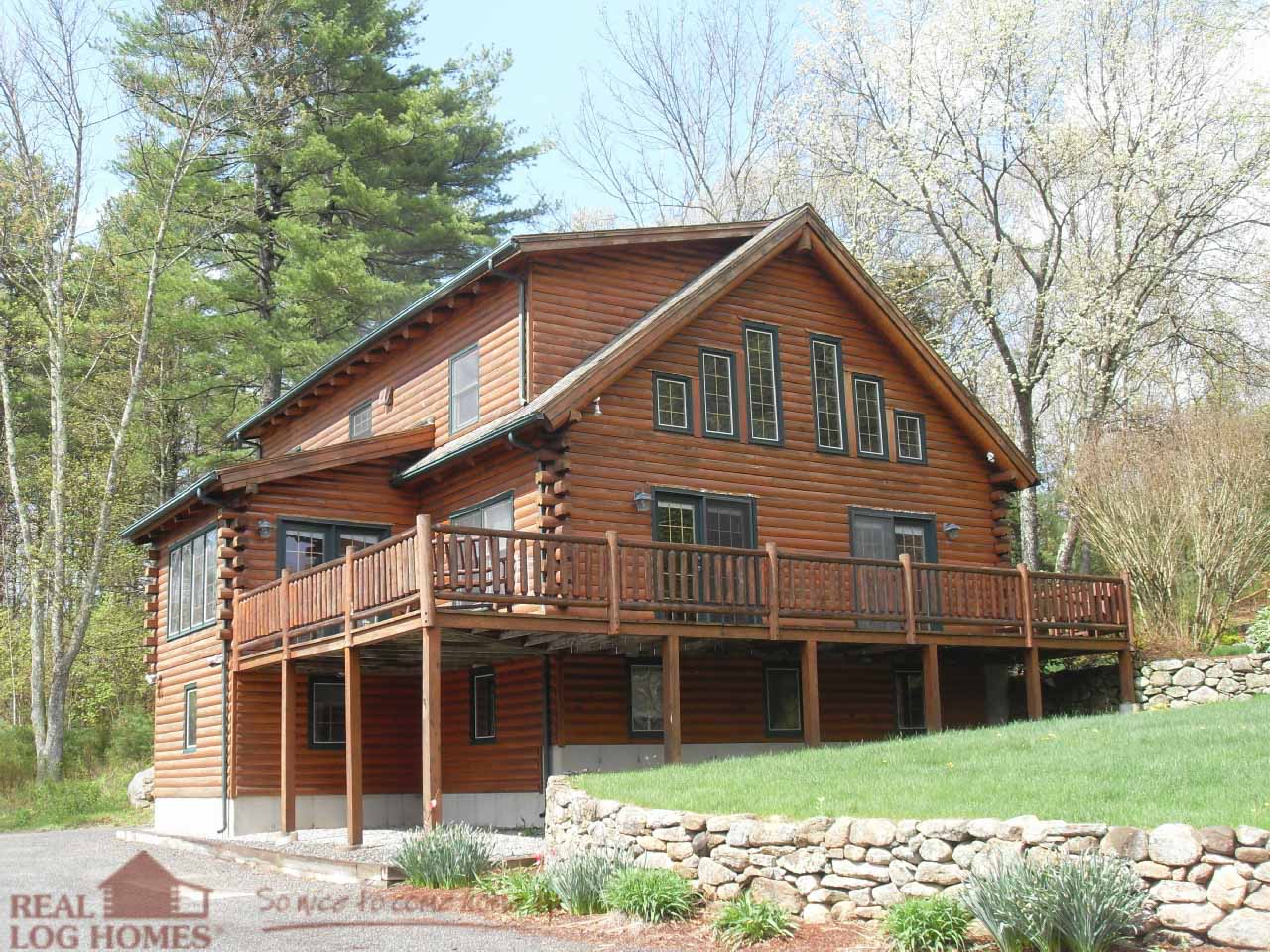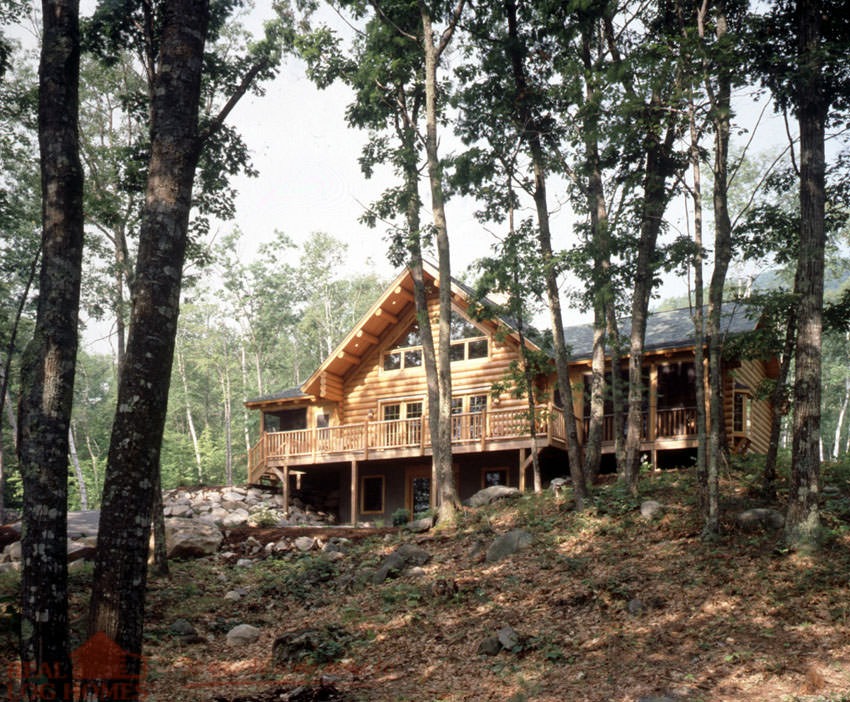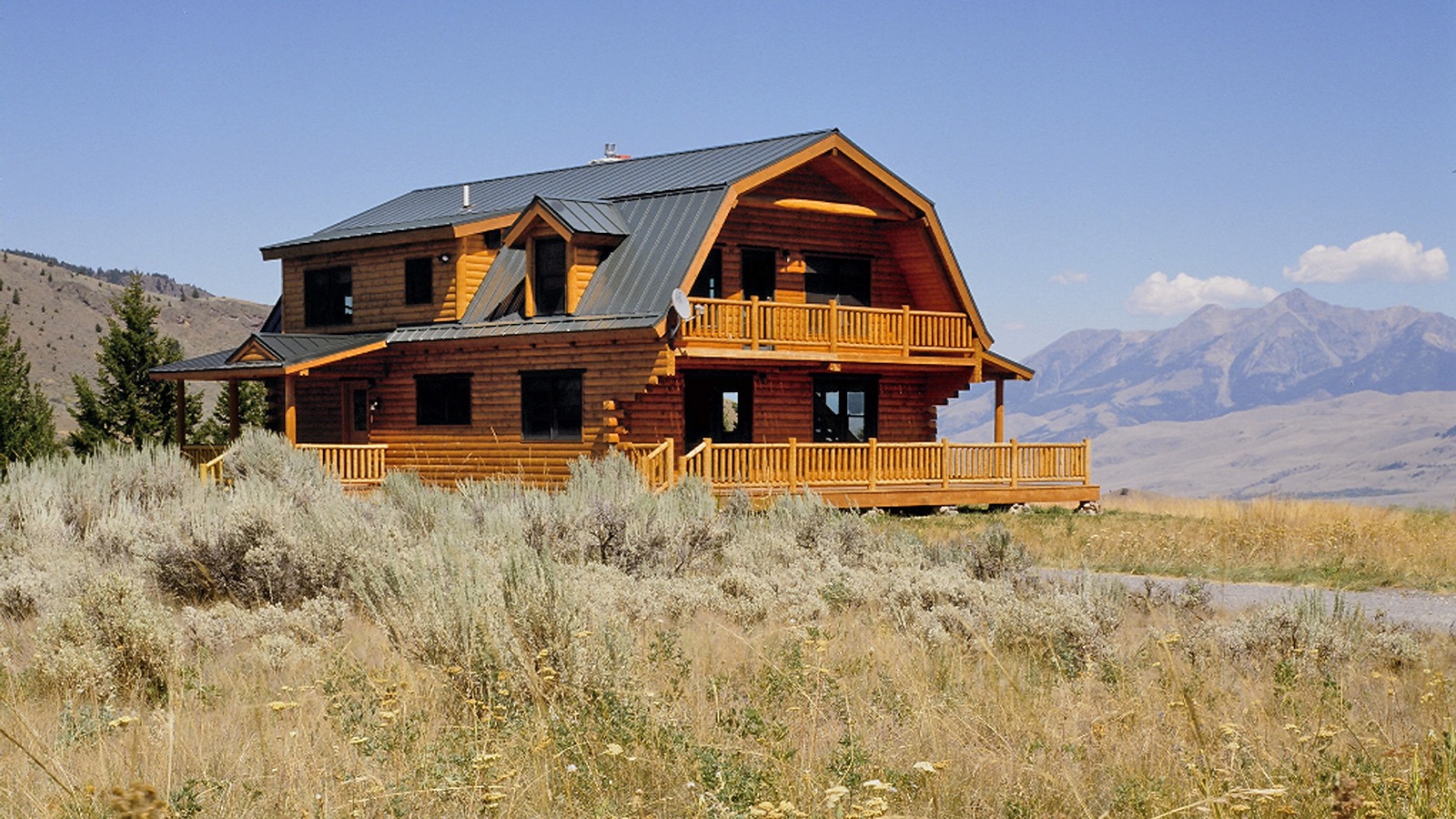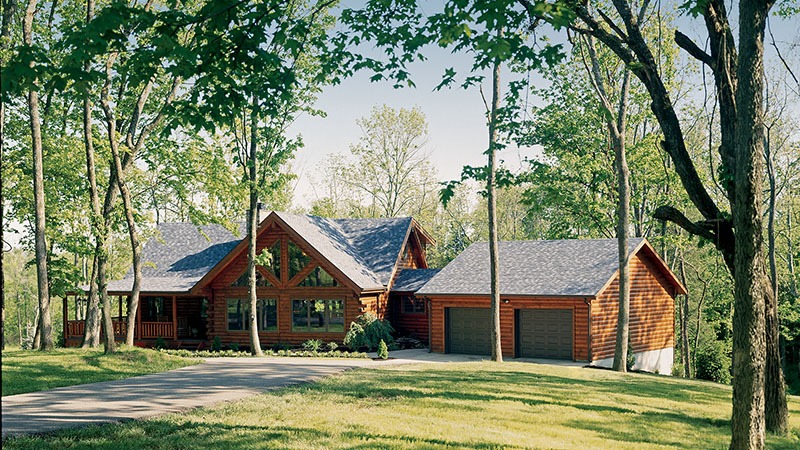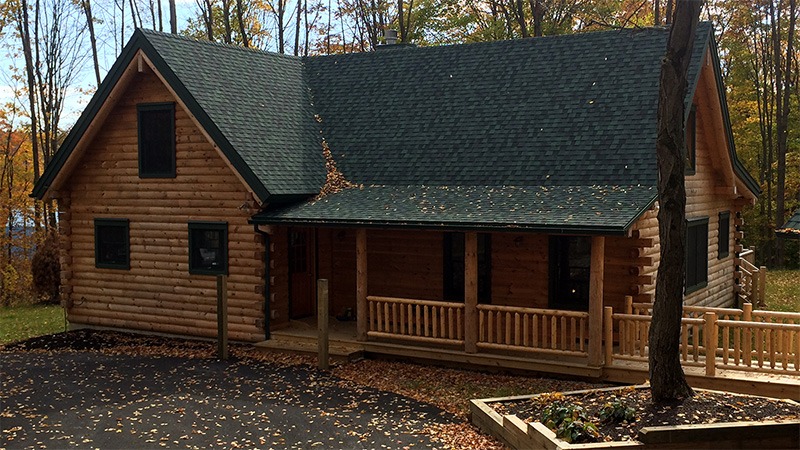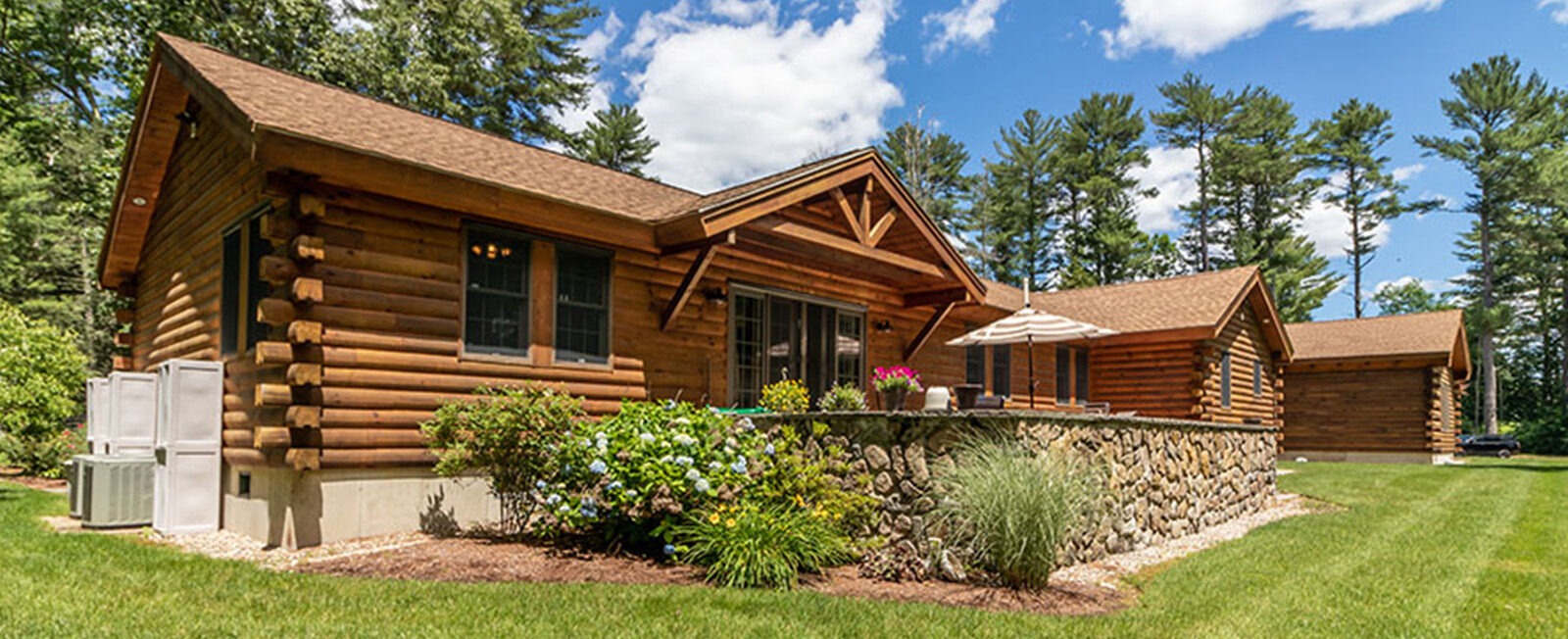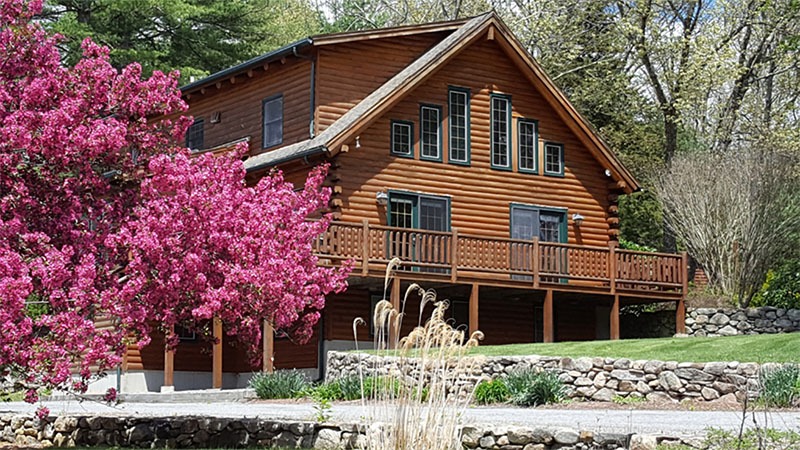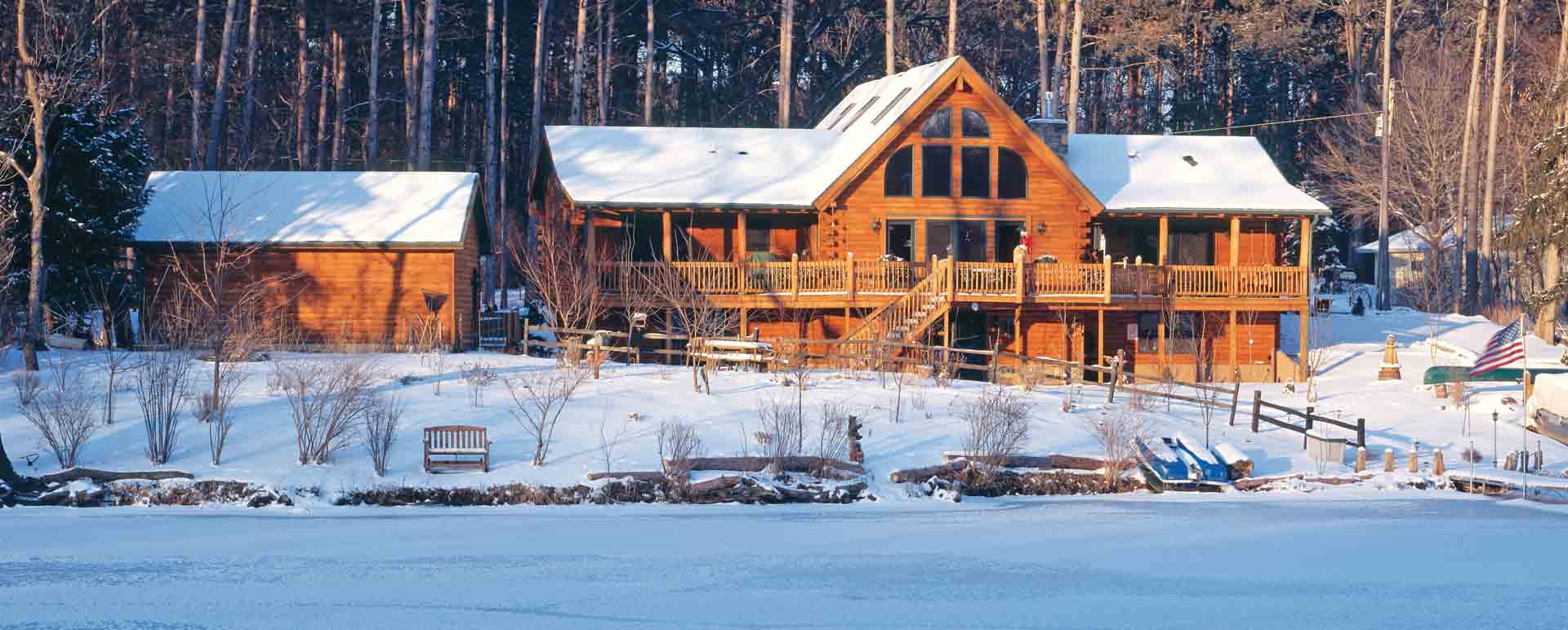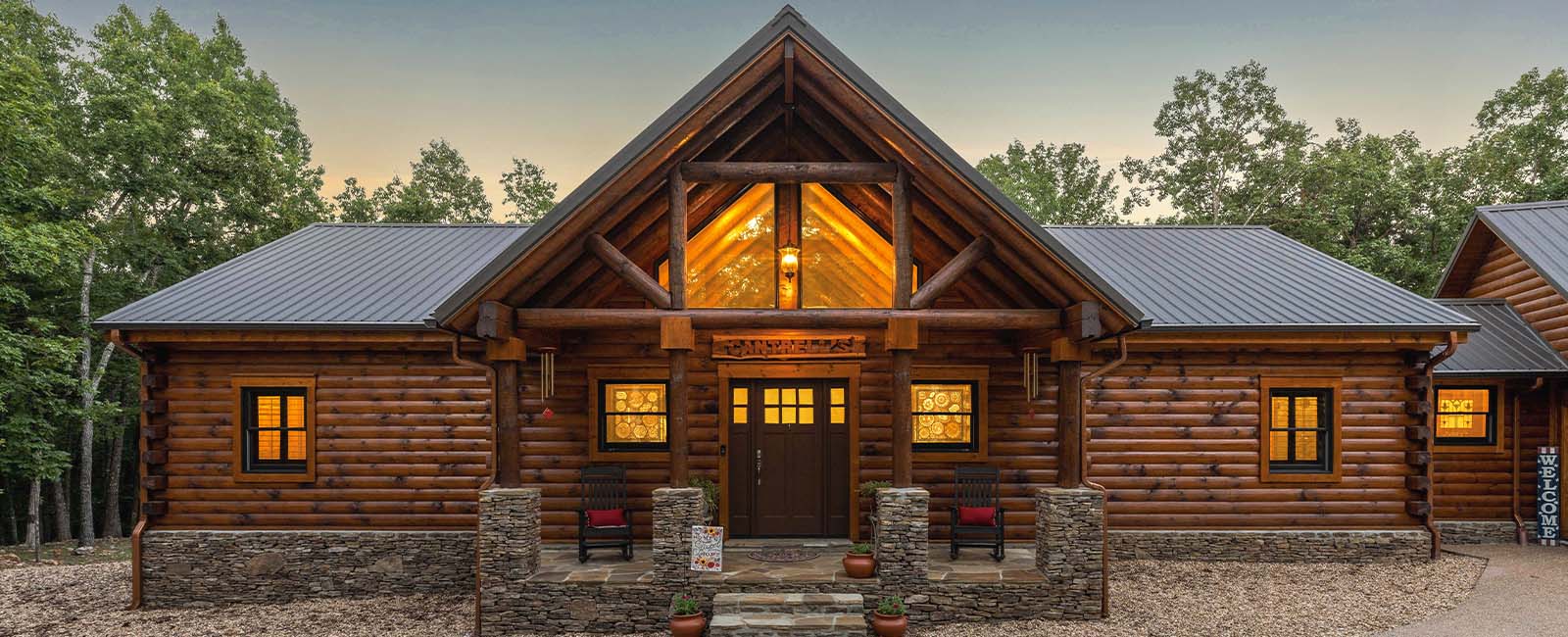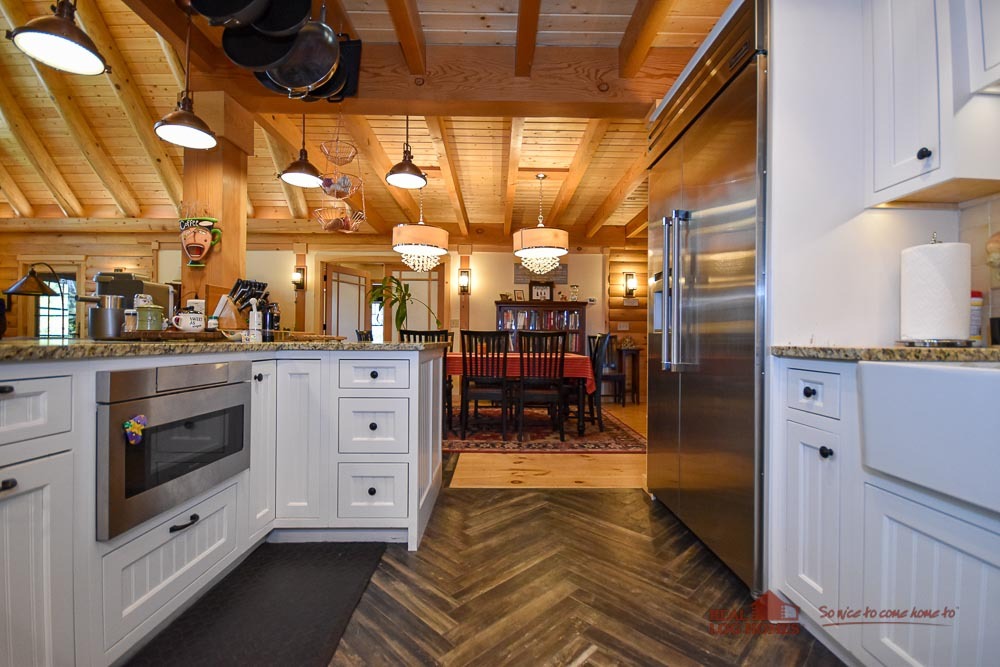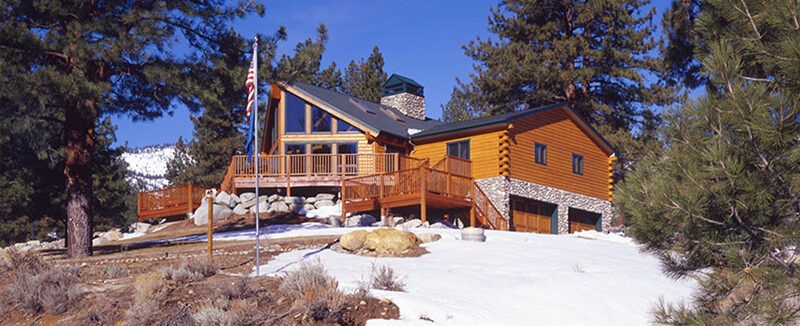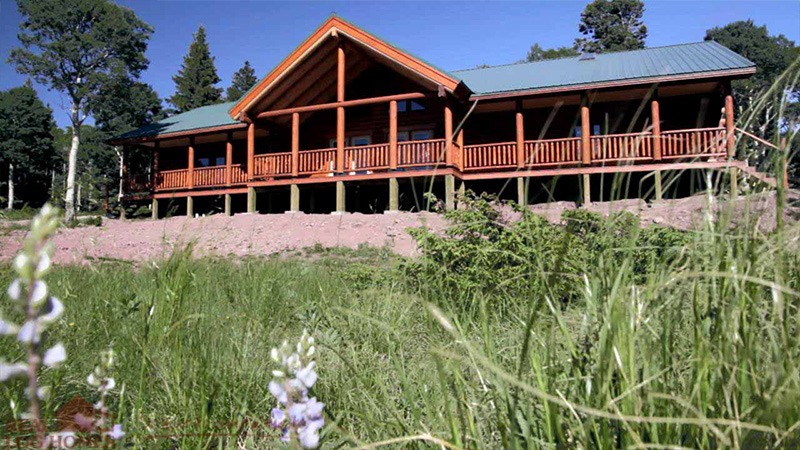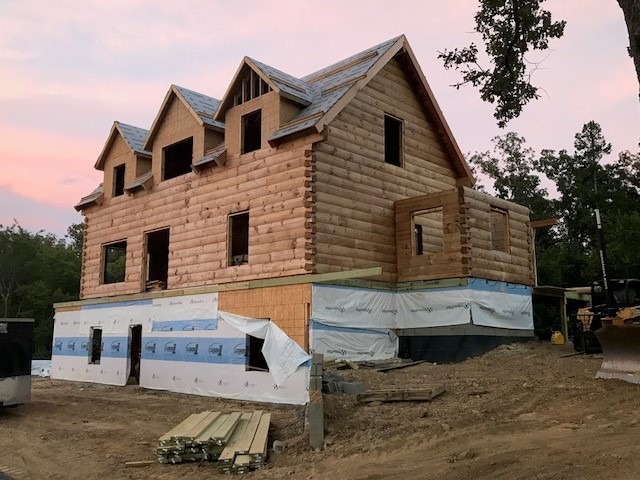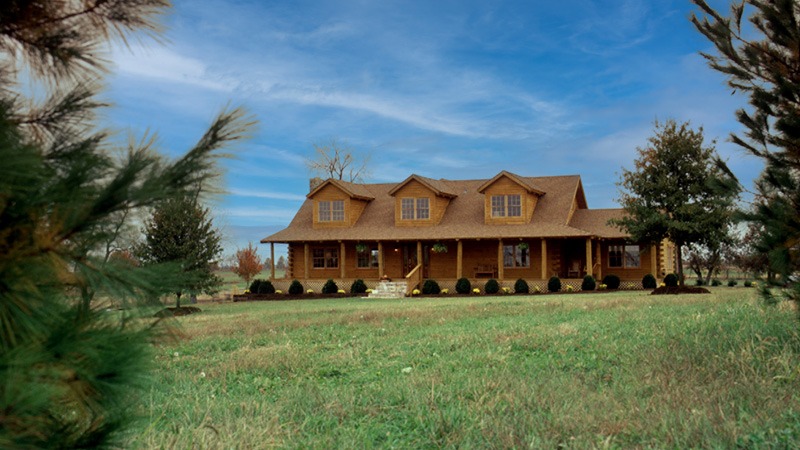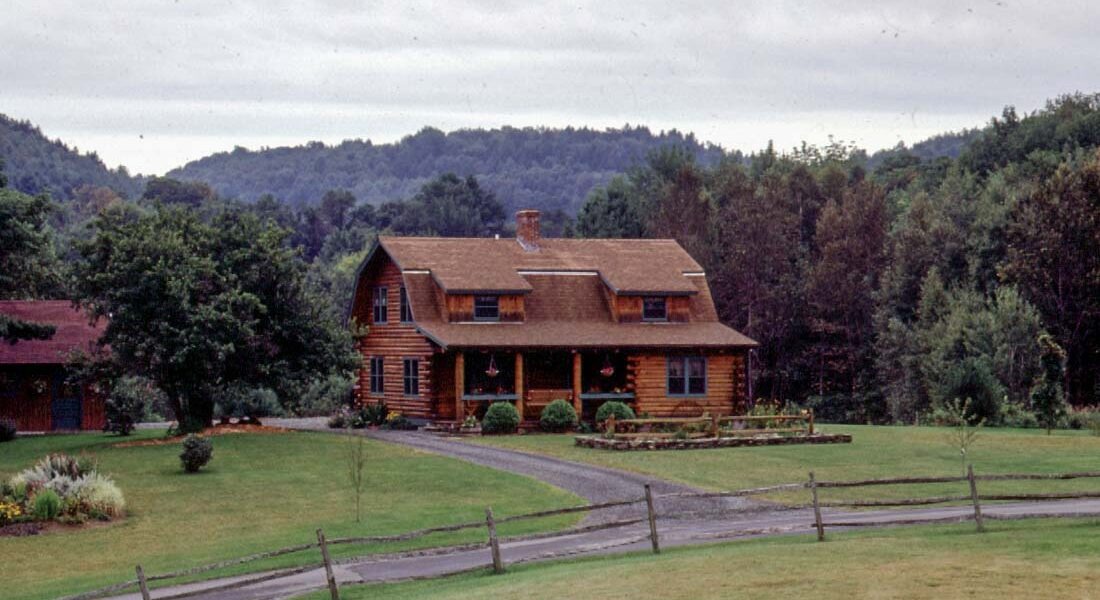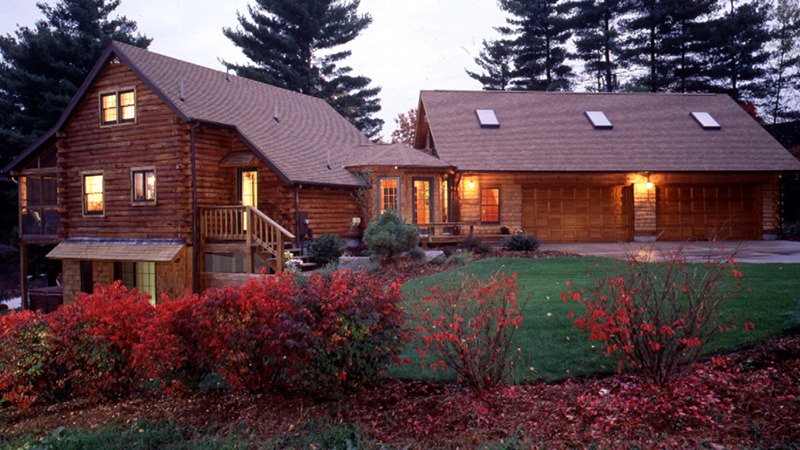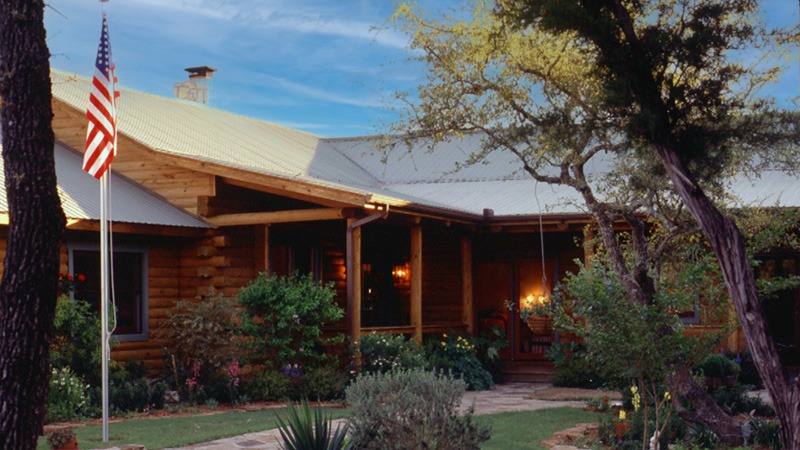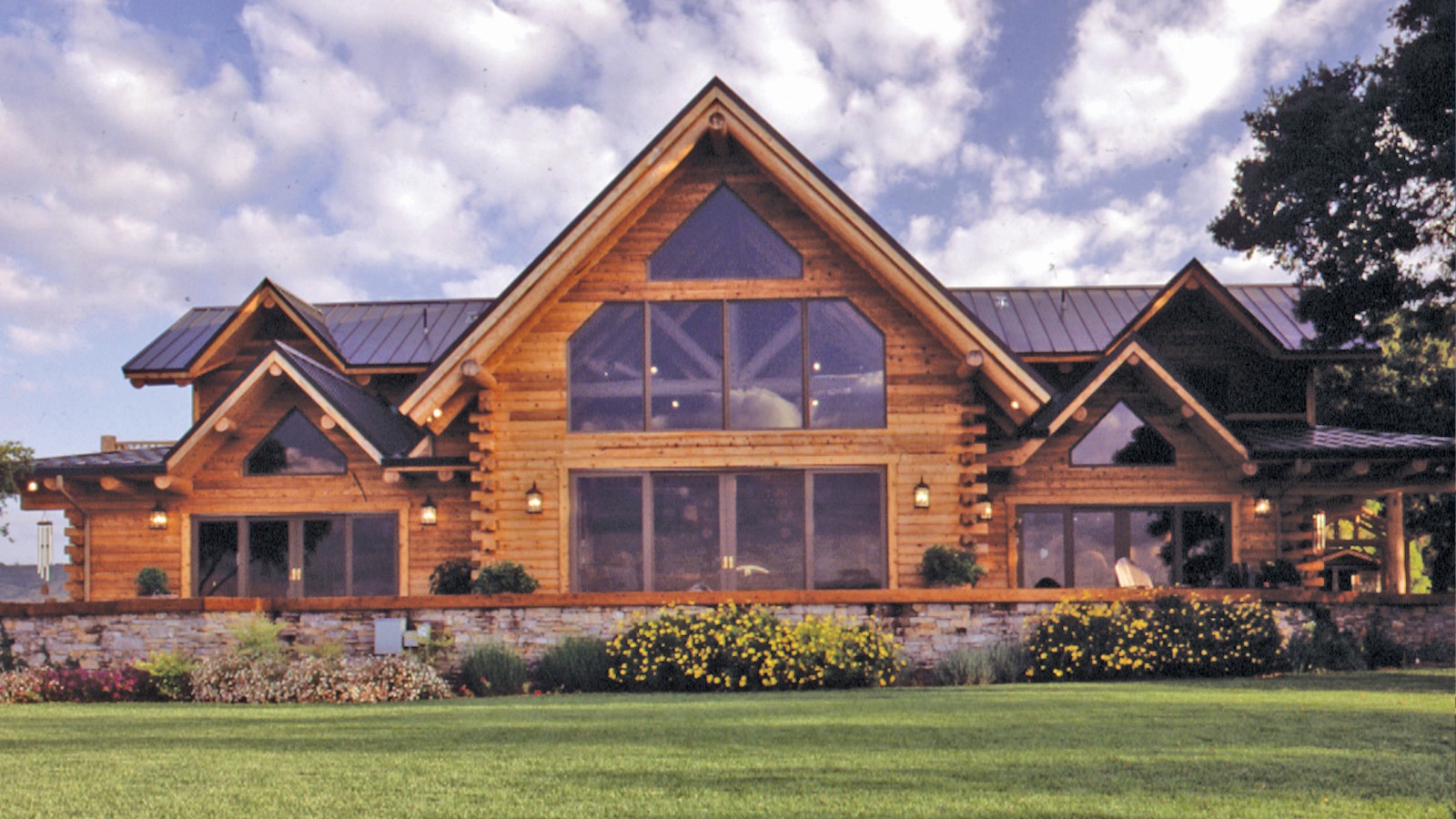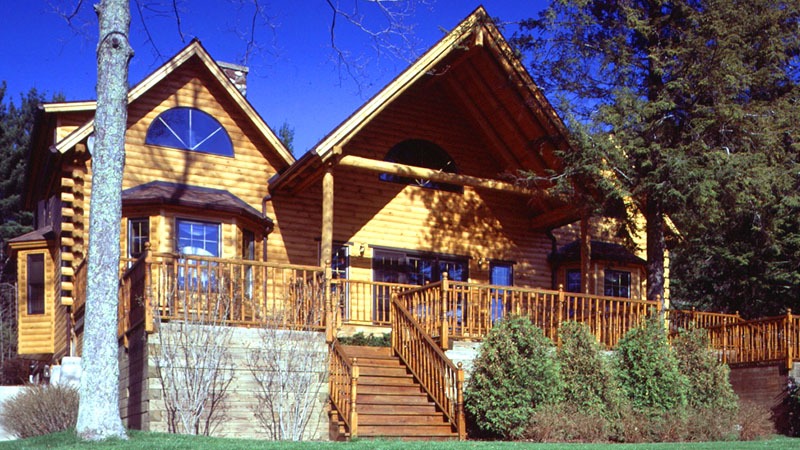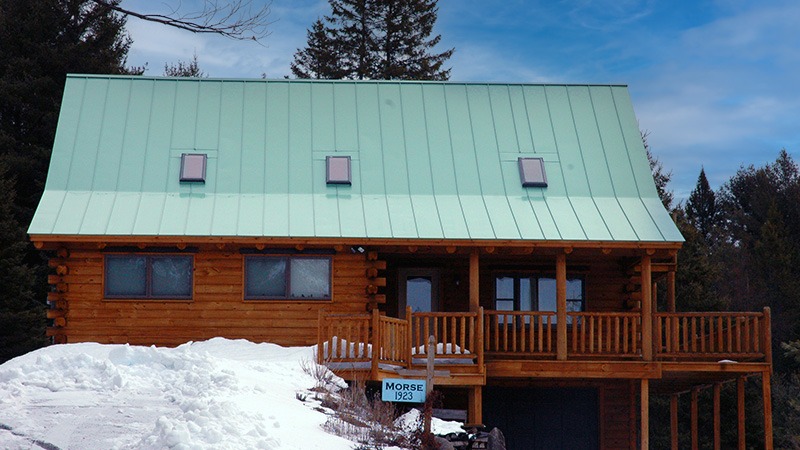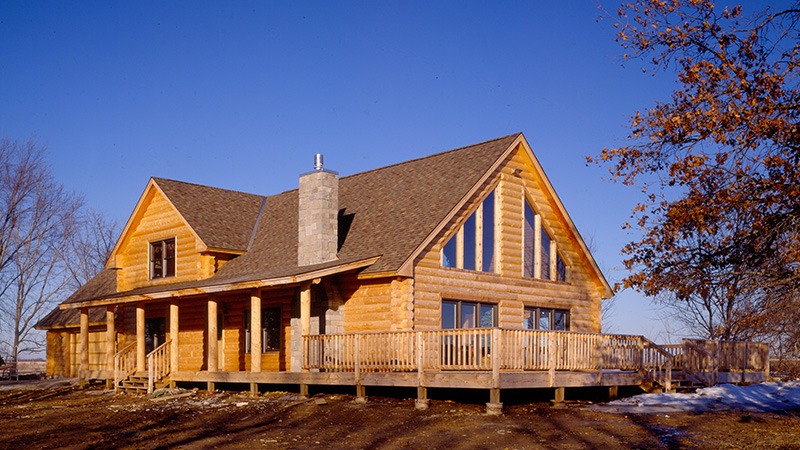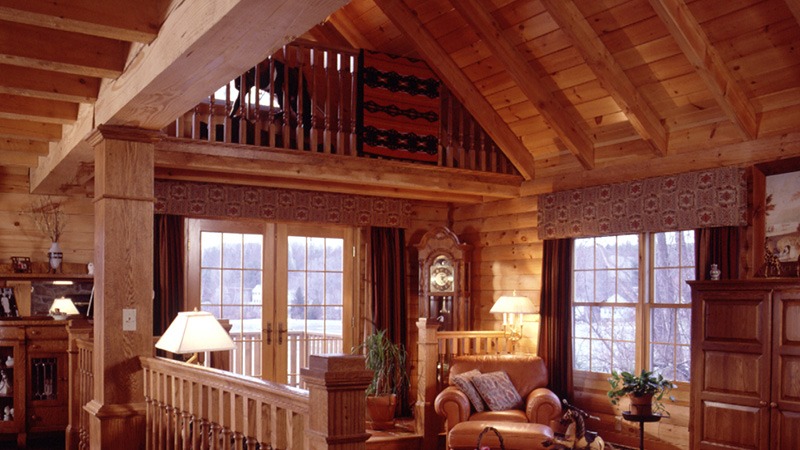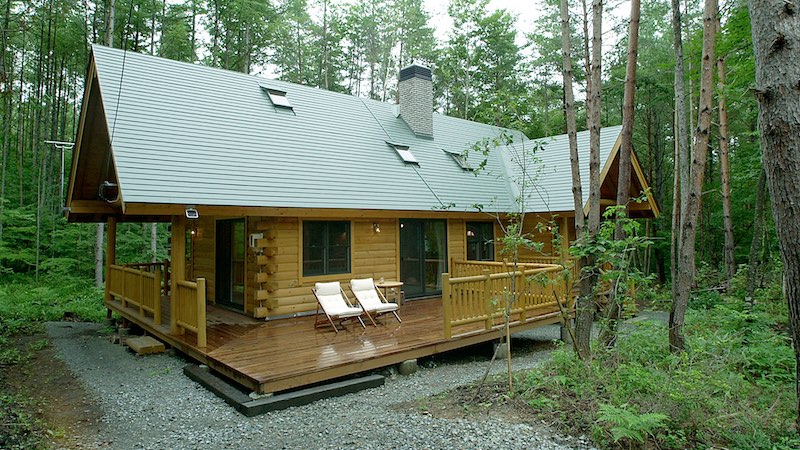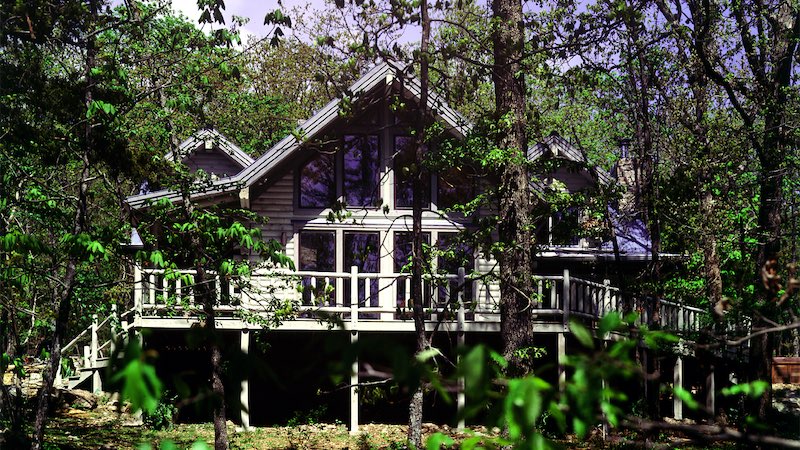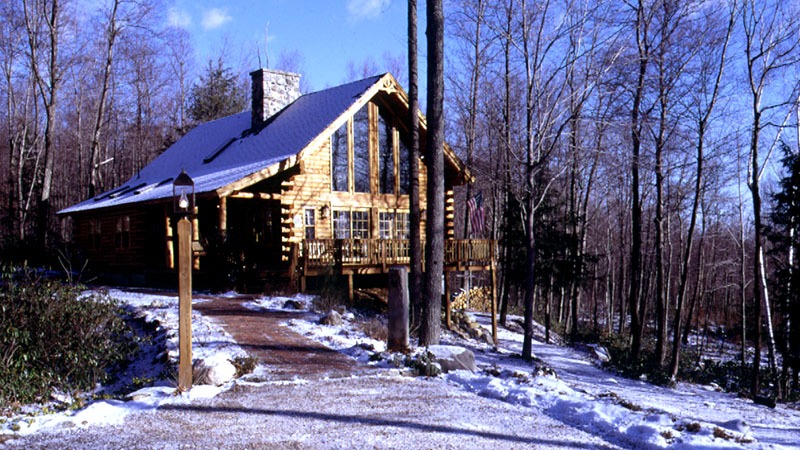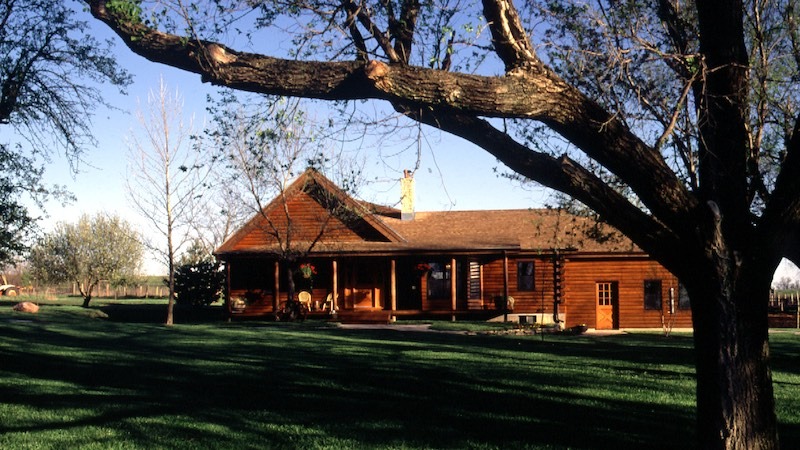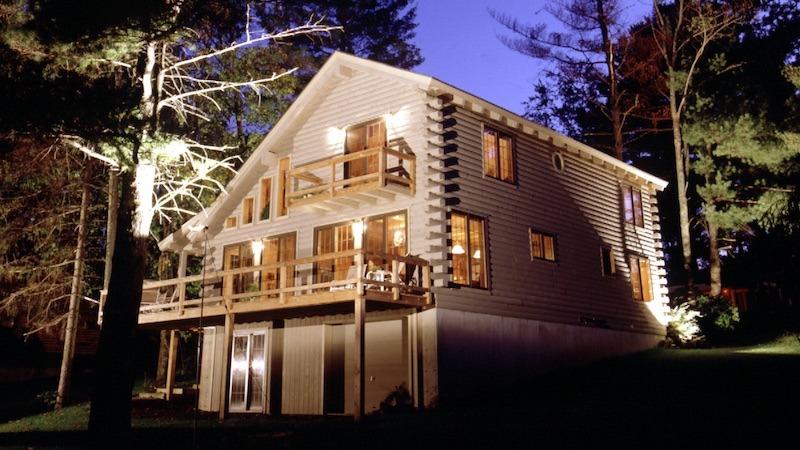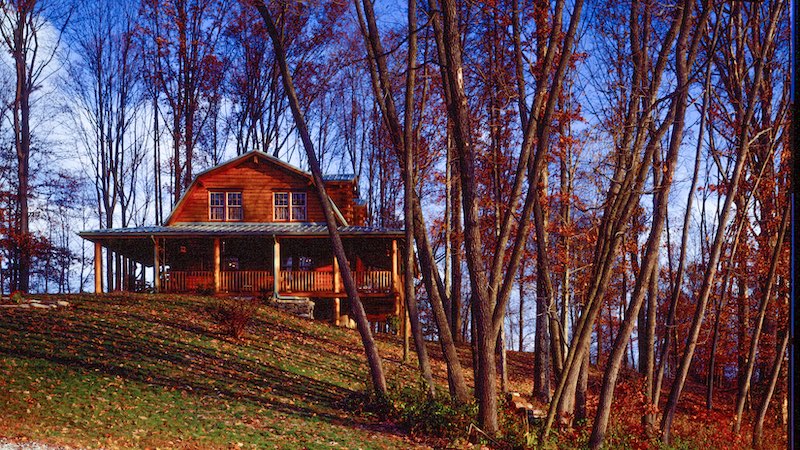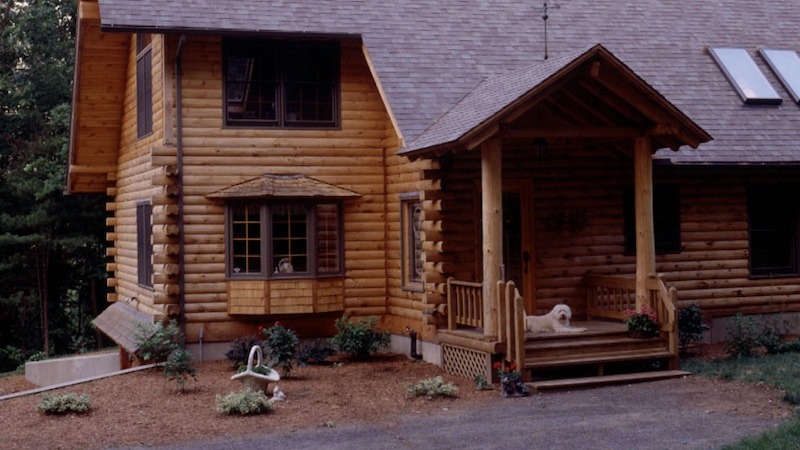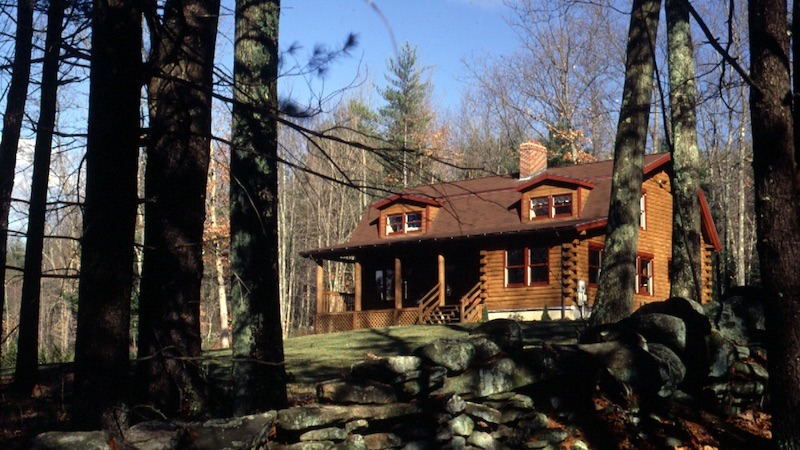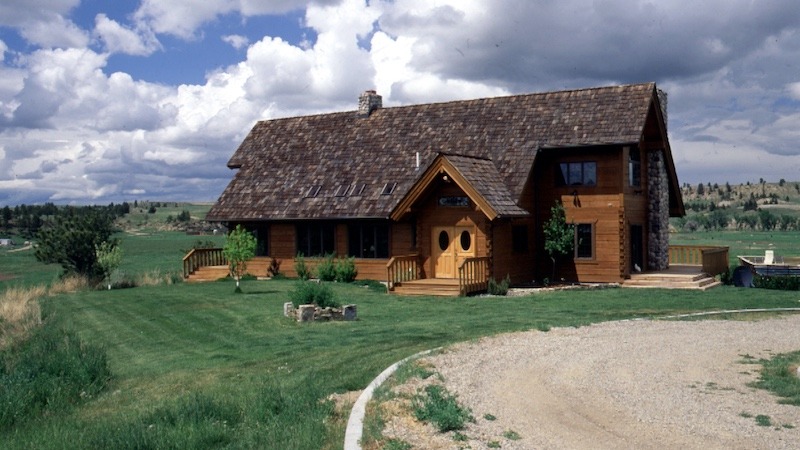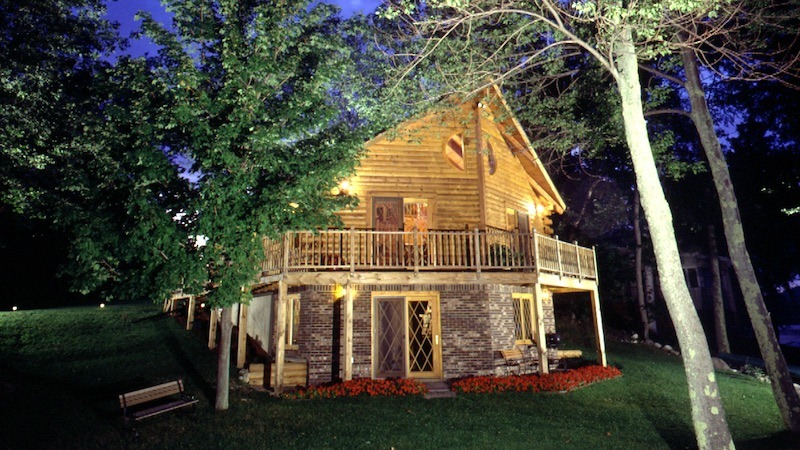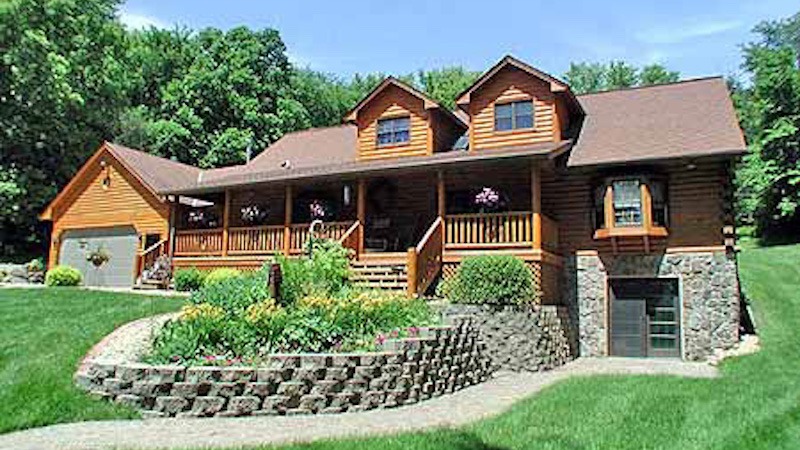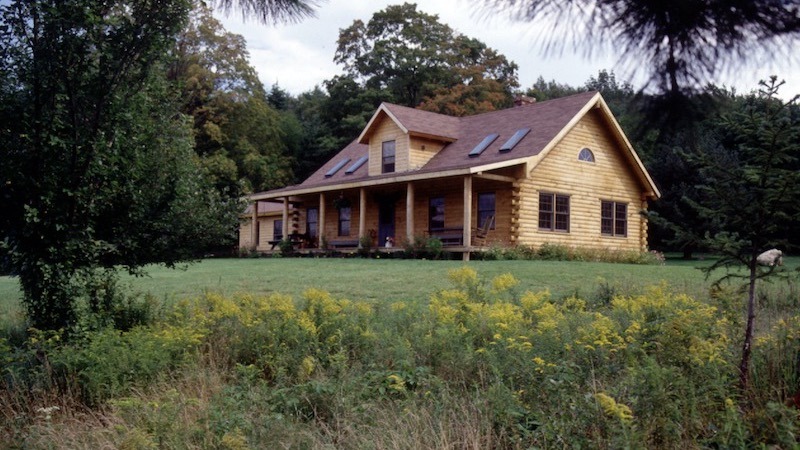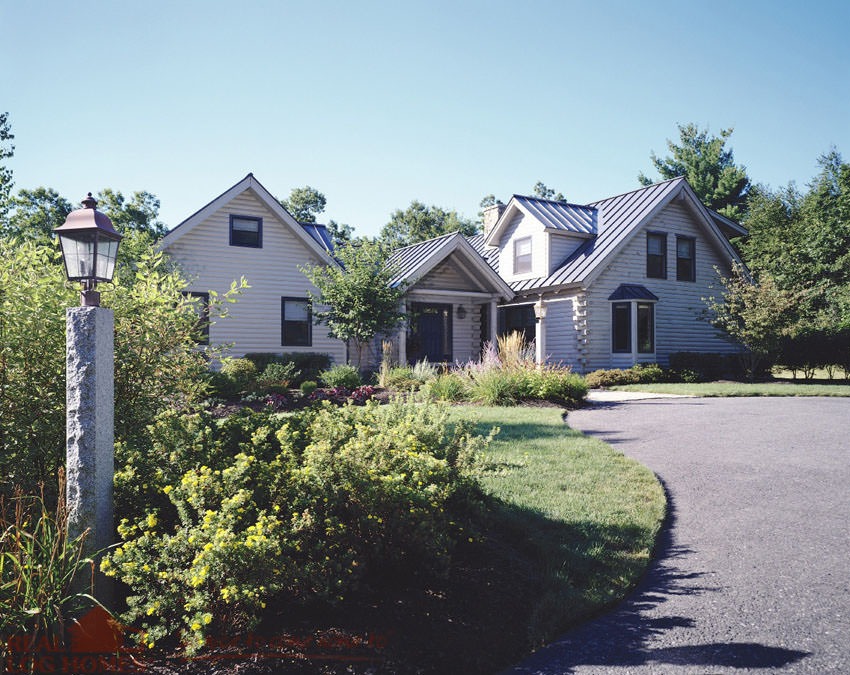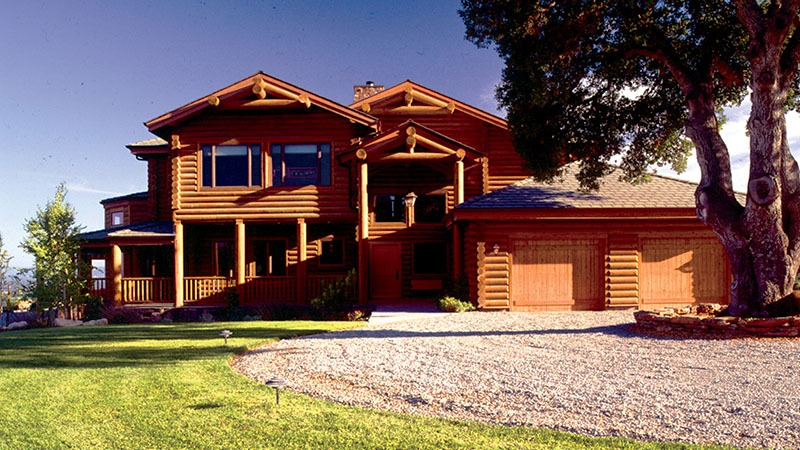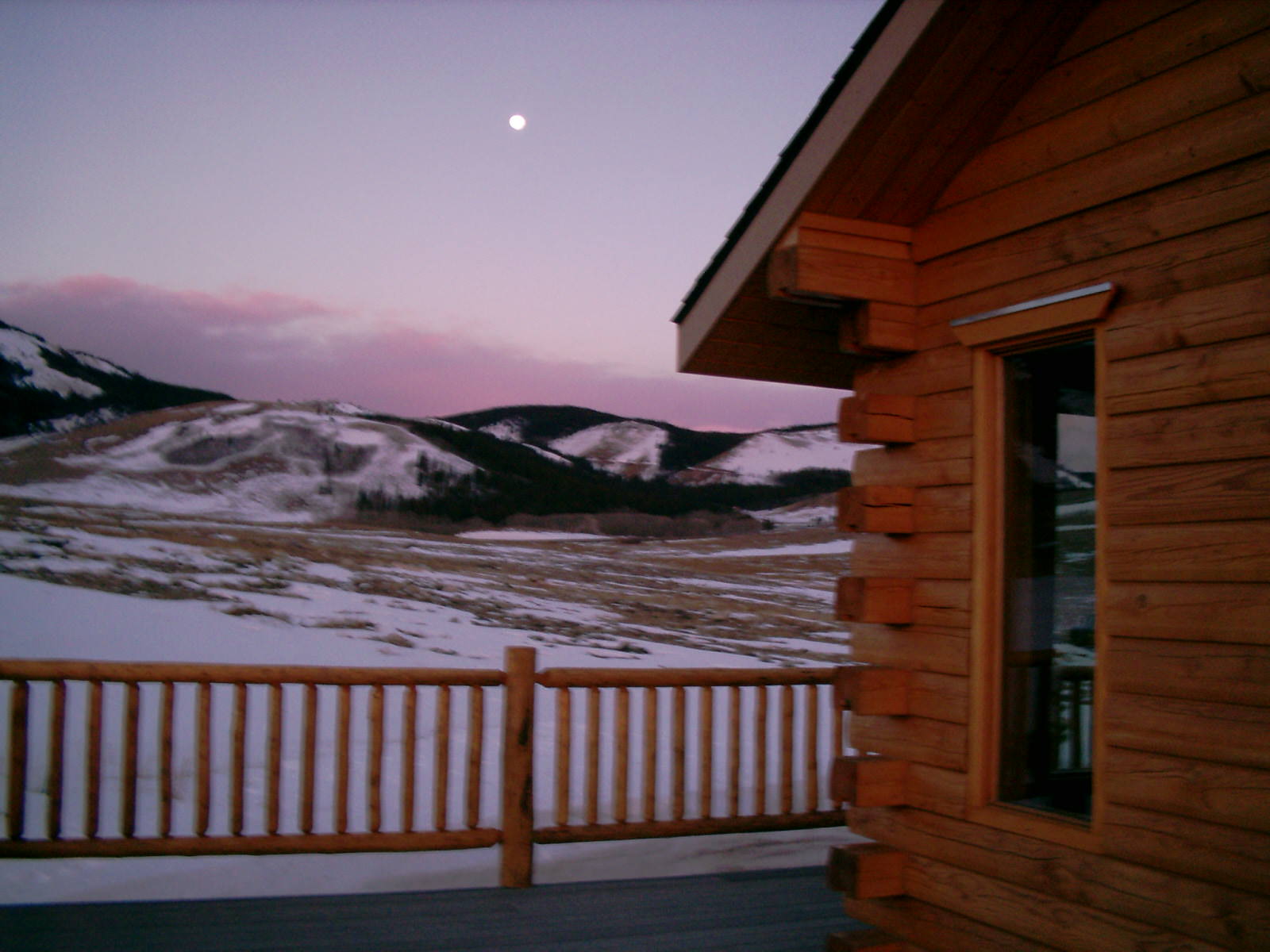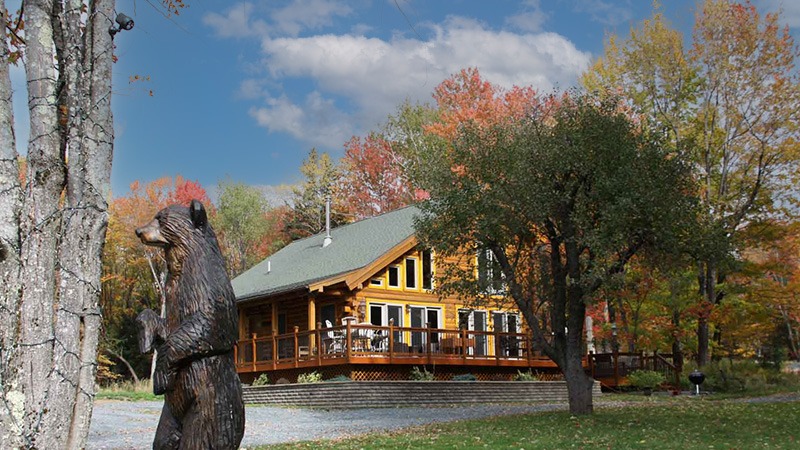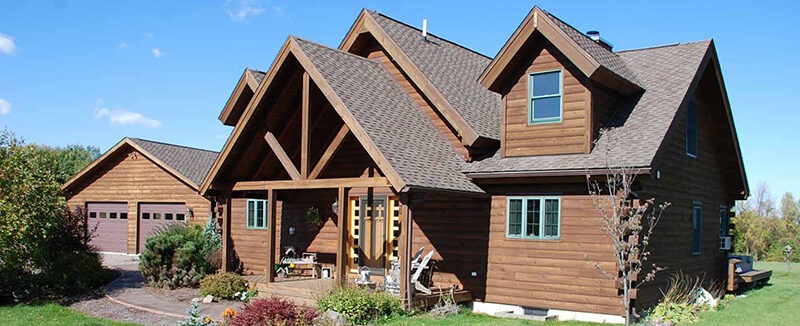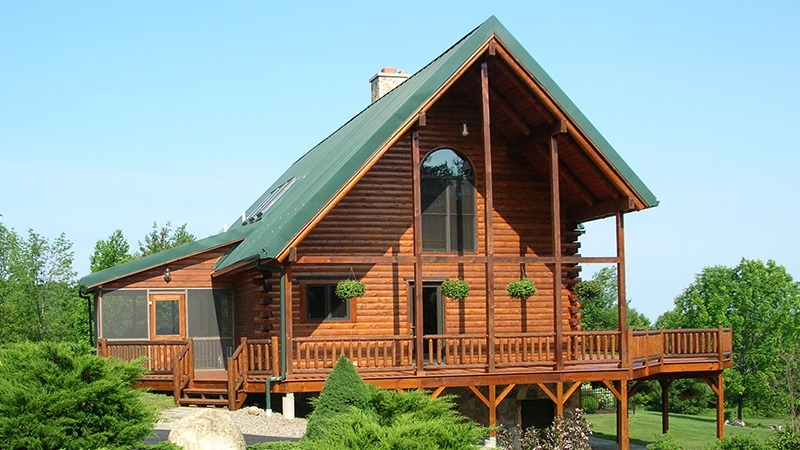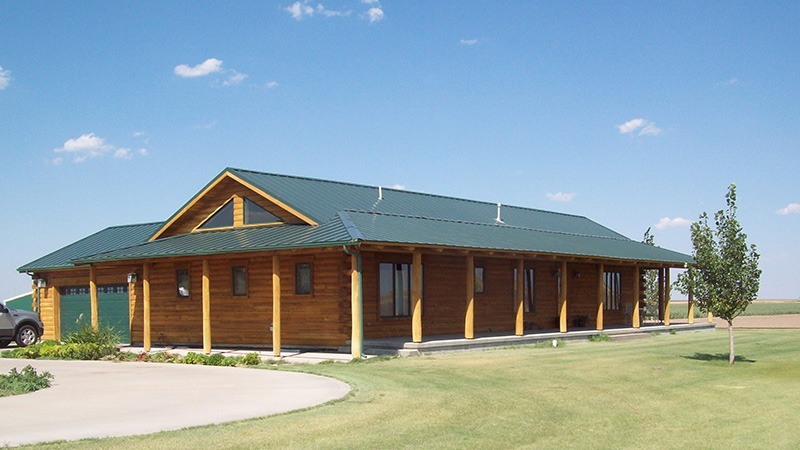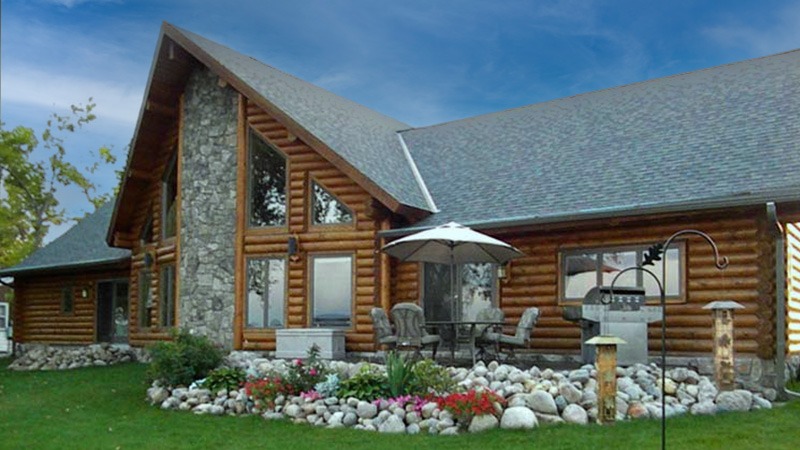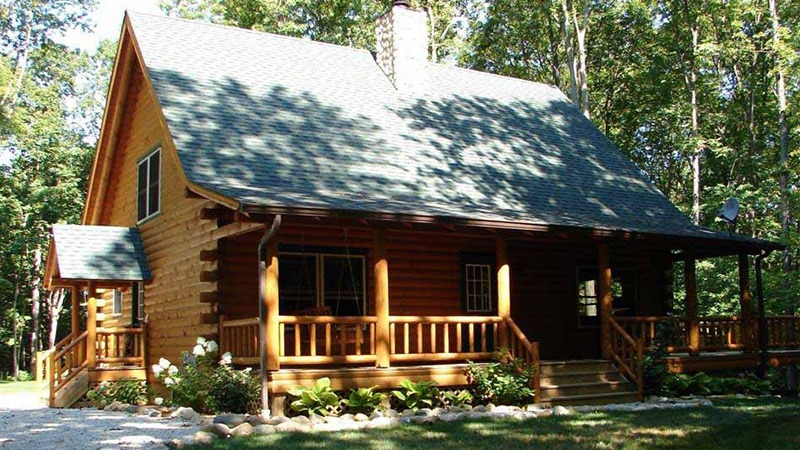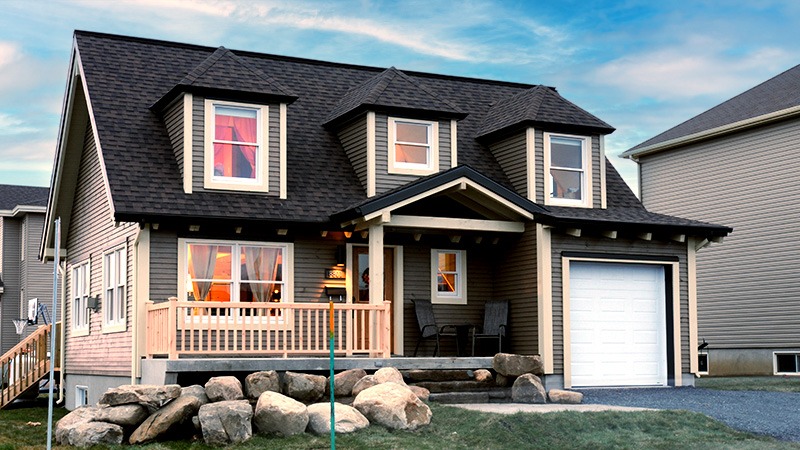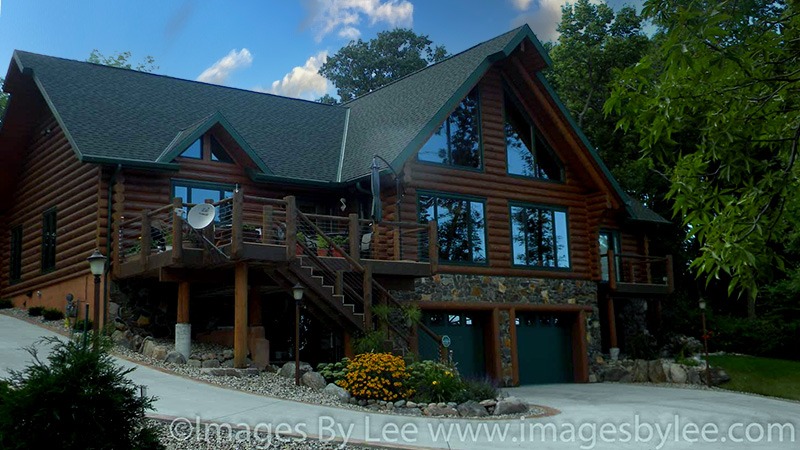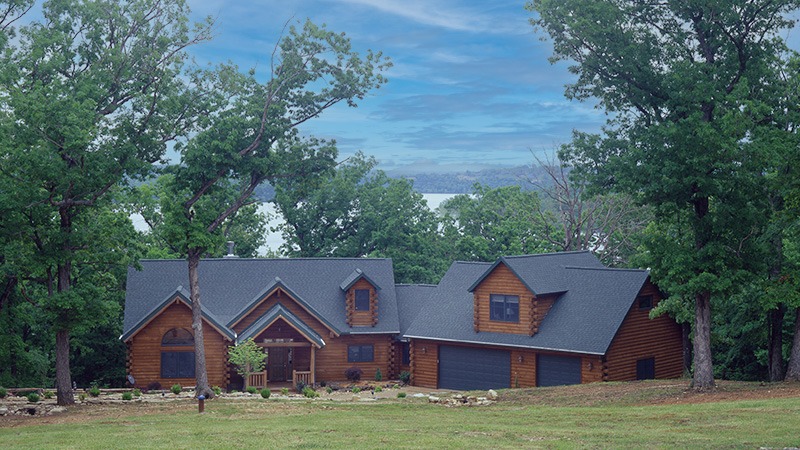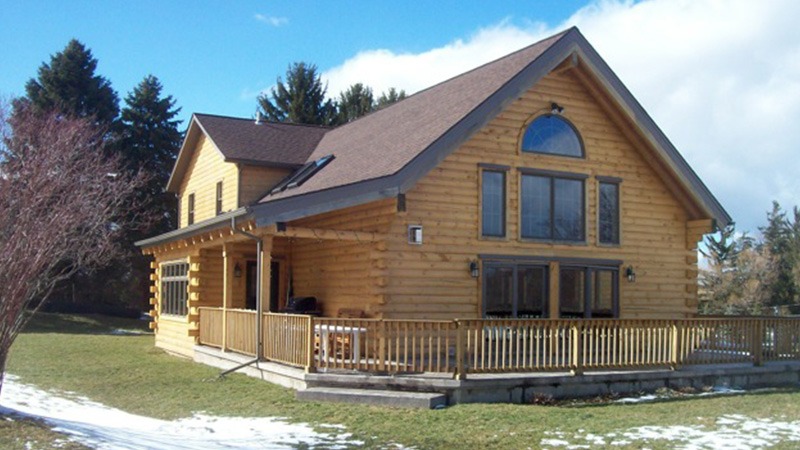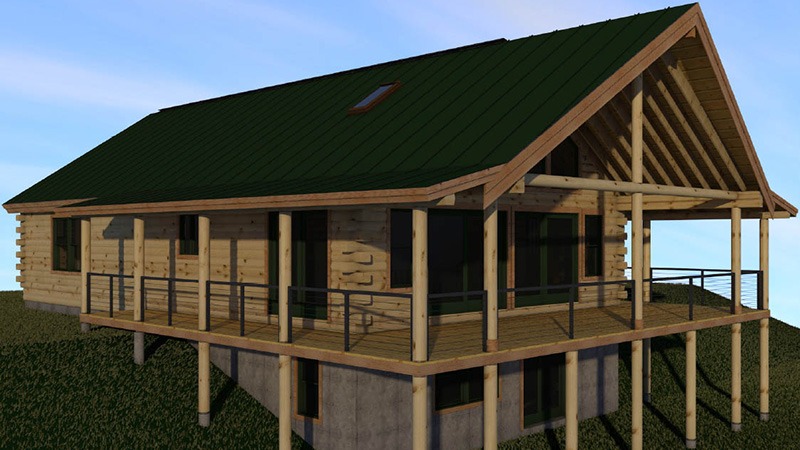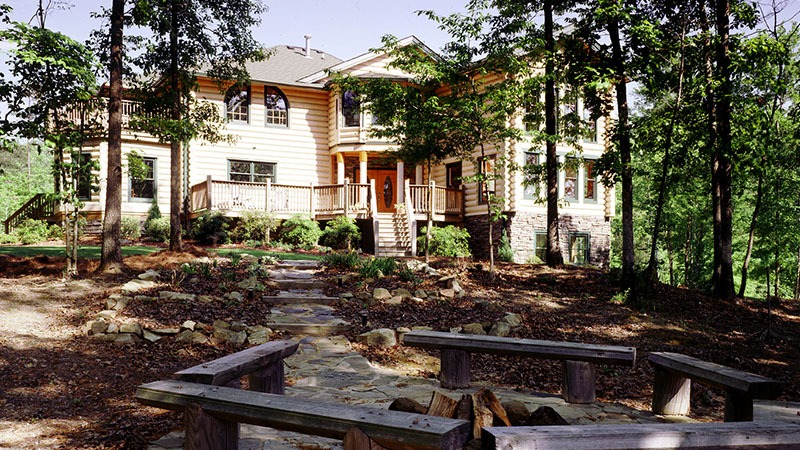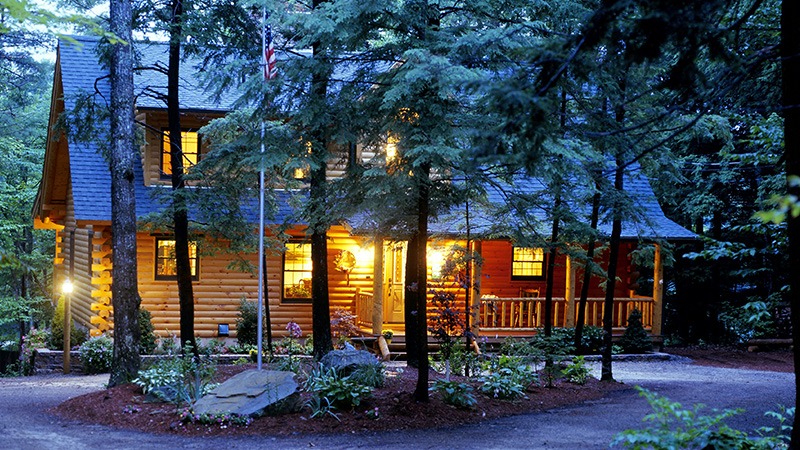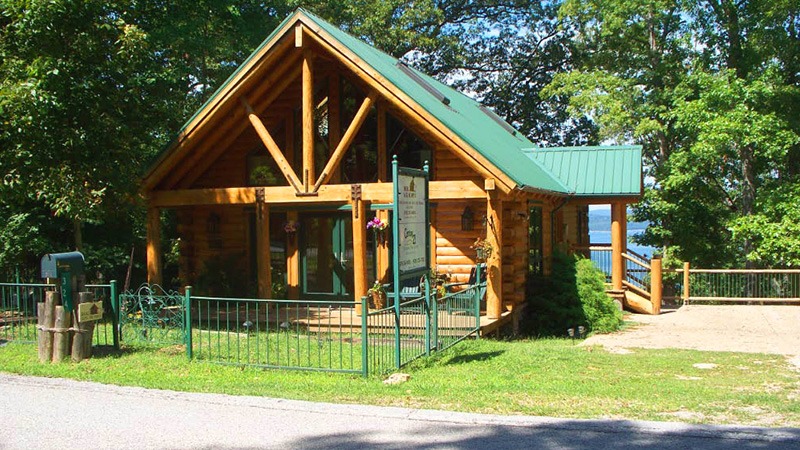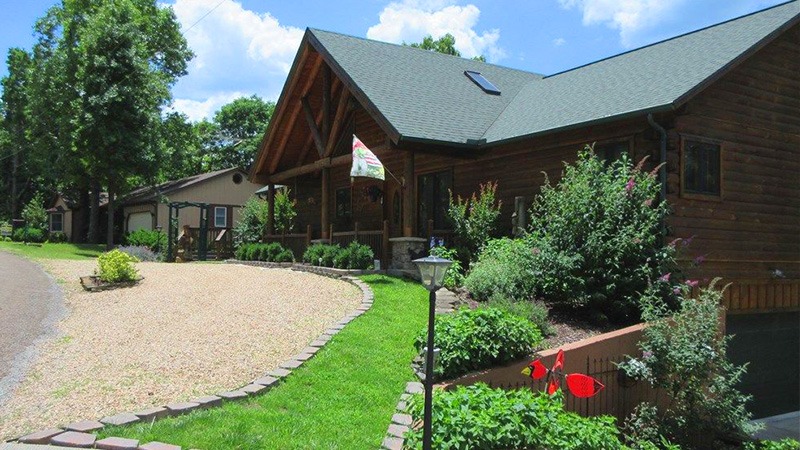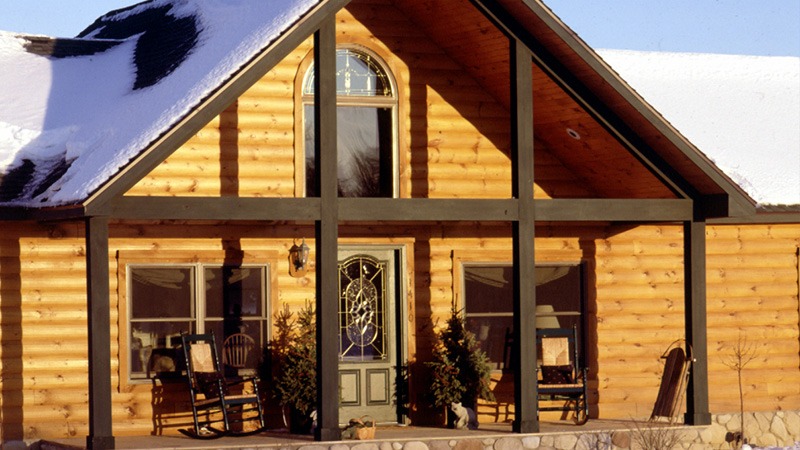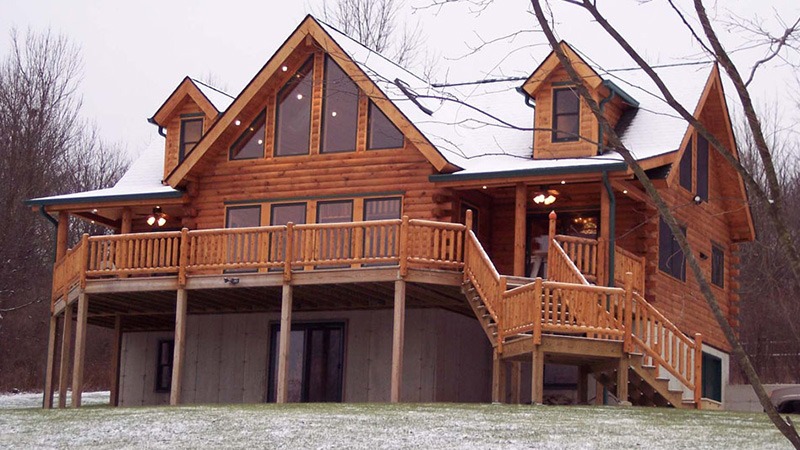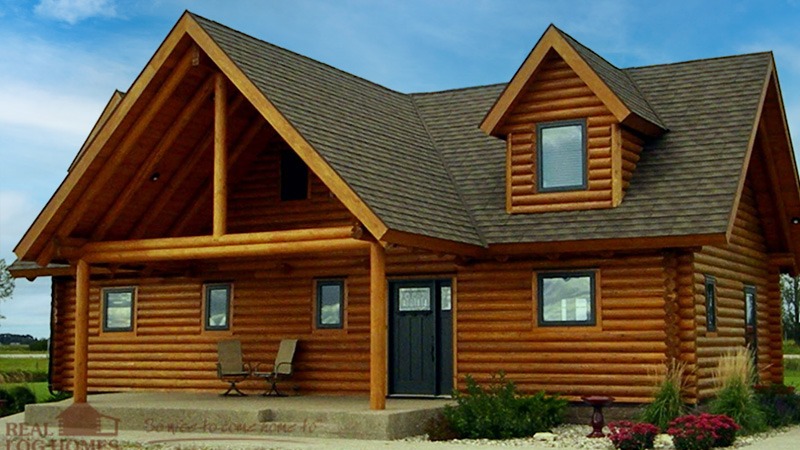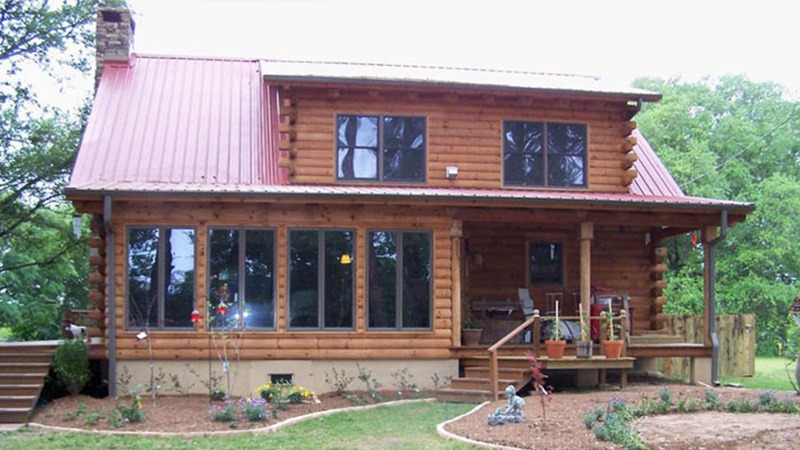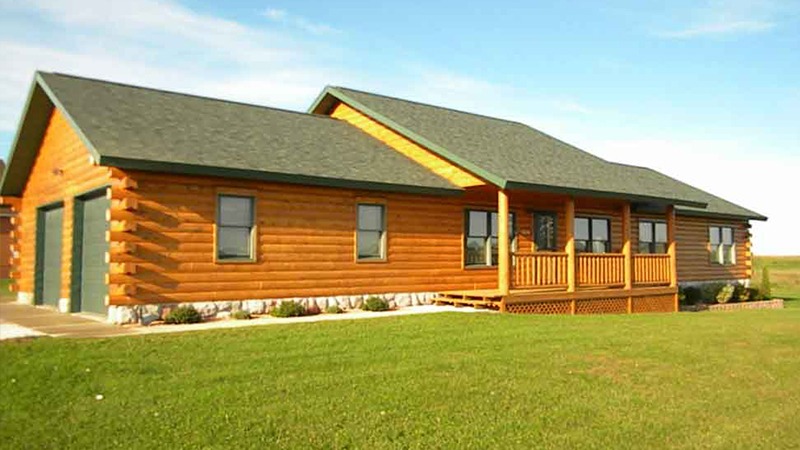Whether you are planning to build your log home in the country or in a more urban setting, it is important to consider how you will live with the wildlife in your area. In some places, securing your waste bins against nosy raccoons may be the biggest problem you face, while in others preventing bears from destroying your bird feeders may be the top priority. In this post, we will discuss some of the more common solutions to living with the wildlife that dwells near your log home.
Securing Trash
With all the food waste that finds its way into our waste streams, it’s no wonder that animals will be attracted to our trash containers. One way of lessening this issue is to compost your food waste; a well-designed compost bin will speed the process and keep animals out. Securing trash cans from small animals like raccoons may be as simple as adding a weight like a cinder block to the top of the trash lid. Protecting from larger animals like bears may require storing the trash inside a garage or some other place the animal cannot access.
Protecting Your Garden
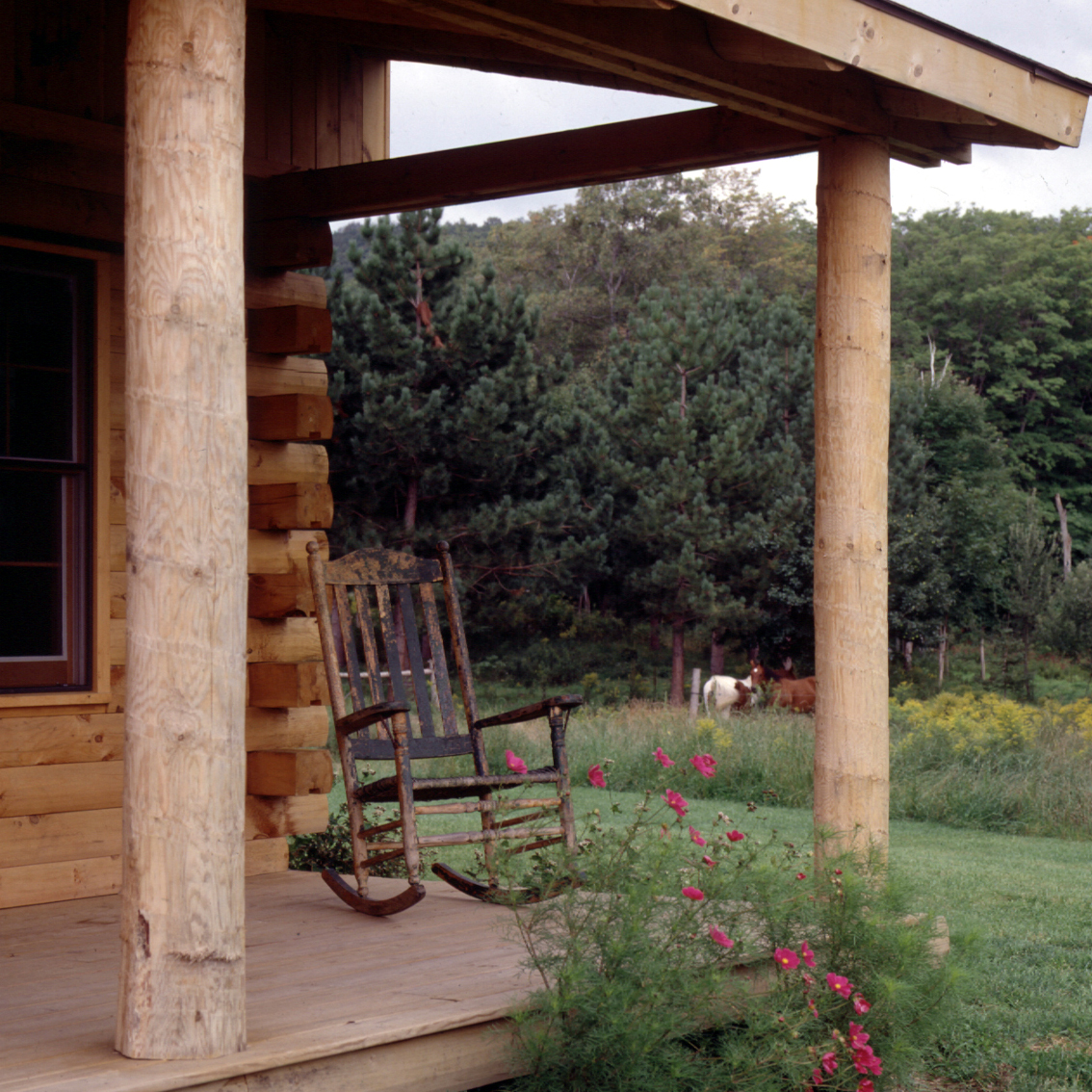
Gardens present many challenges to preventing wildlife from damaging your plants. Fruits and vegetables are obvious targets for animals looking for a quick meal, and some ornamental flowers are also quite attractive. The layout of your garden will affect how you can try to minimize the damage from wildlife.
For small, fruiting plants like strawberries, consider enclosing (completely, the top too!) the plant bed with wire fencing with a mesh size of about one inch. This will prevent birds, rodents, or deer from eating the plants, but allow bees to enter to pollinate them. For maximum convenience, make sure to build access doors so you can pick your fruits when they ripen. Larger plants, like fruiting trees, will also attract animals but are harder to protect from wildlife.
One way to protect fruit trees from large animals like deer is to lay livestock fencing on the ground around the tree. The animals will not cross the fence and will thus leave the tree undisturbed.
If you have a vegetable garden concentrated in one place in the yard, then the entire garden can be enclosed by a fence to keep deer out. The fence should be around seven feet tall to keep deer out, but if the fence is slanted outward then it may be only four feet tall. If your garden is more spread out, then repellants like coyote urine or cayenne pepper can be used. Having a dog can also help to keep deer away.
Securing Feed

Bird feeders, of course, also attract other animals, and especially squirrels. Most feeders can be equipped with devices to discourage squirrels from feeding, such as the simple disk found atop many feeders. More modern feeders can close the seed ports when a large enough weight is placed on the feeder, preventing squirrels from getting access to the feed. None of these methods, however, can discourage the bears from getting into the feeder as they can simply smash open the feeder to get at the seed. In New England, our saying goes “when April 1st comes to town, don’t leave bird feeders hanging around.” If you live in bear country, make sure to take your feeders down before they come out of hibernation.

Of course, there are many other steps you can take to keep your log home safe and secure from any bothersome neighbors. But there are so many wonderful things about living close to nature that it’s well worth the planning ahead to keep you and your property safe and leaving the wildlife to go on its wild way. If you have questions about any of the log homes in this post or getting your own log home in the wilderness started, please don’t hesitate to call Real Log Homes today or fill out the form below for more information.
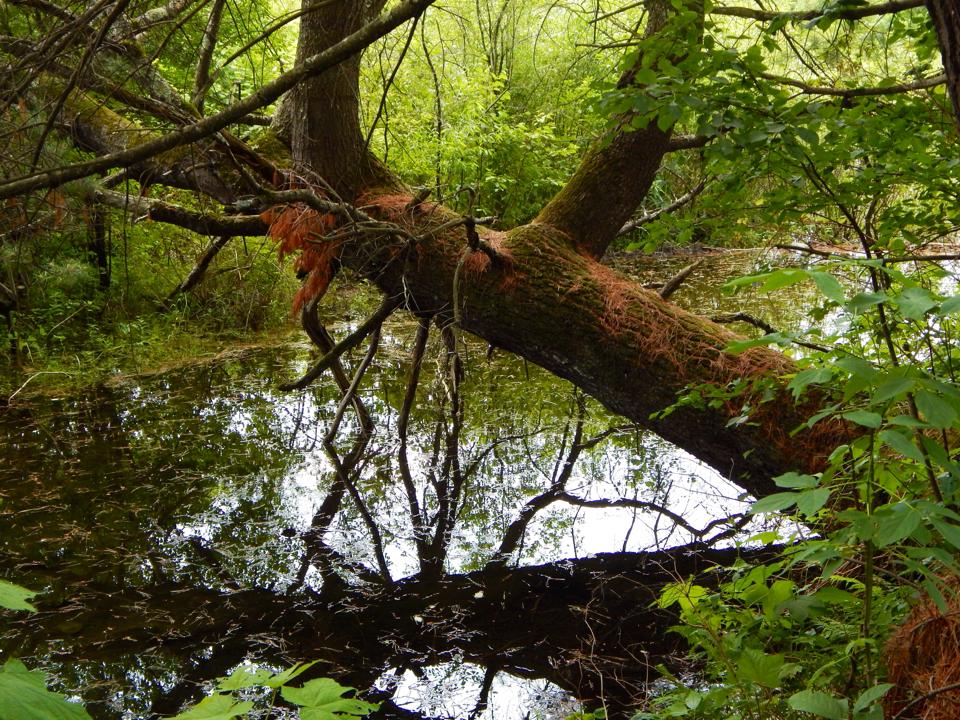
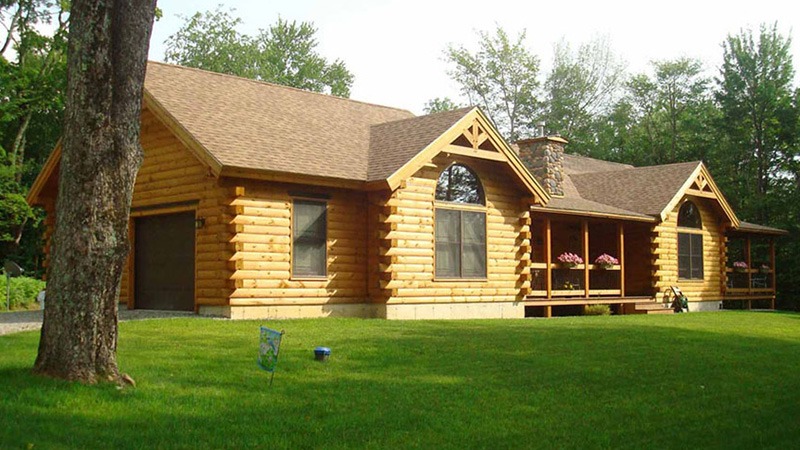
![[KAB-IN] Vermont - Renovated 1972 Real Log Homes Rental Cabin](https://realloghomes.com/wp-content/uploads/2019/03/Cavendish-KAB-IN-Woodstock-VT-51.jpg)
